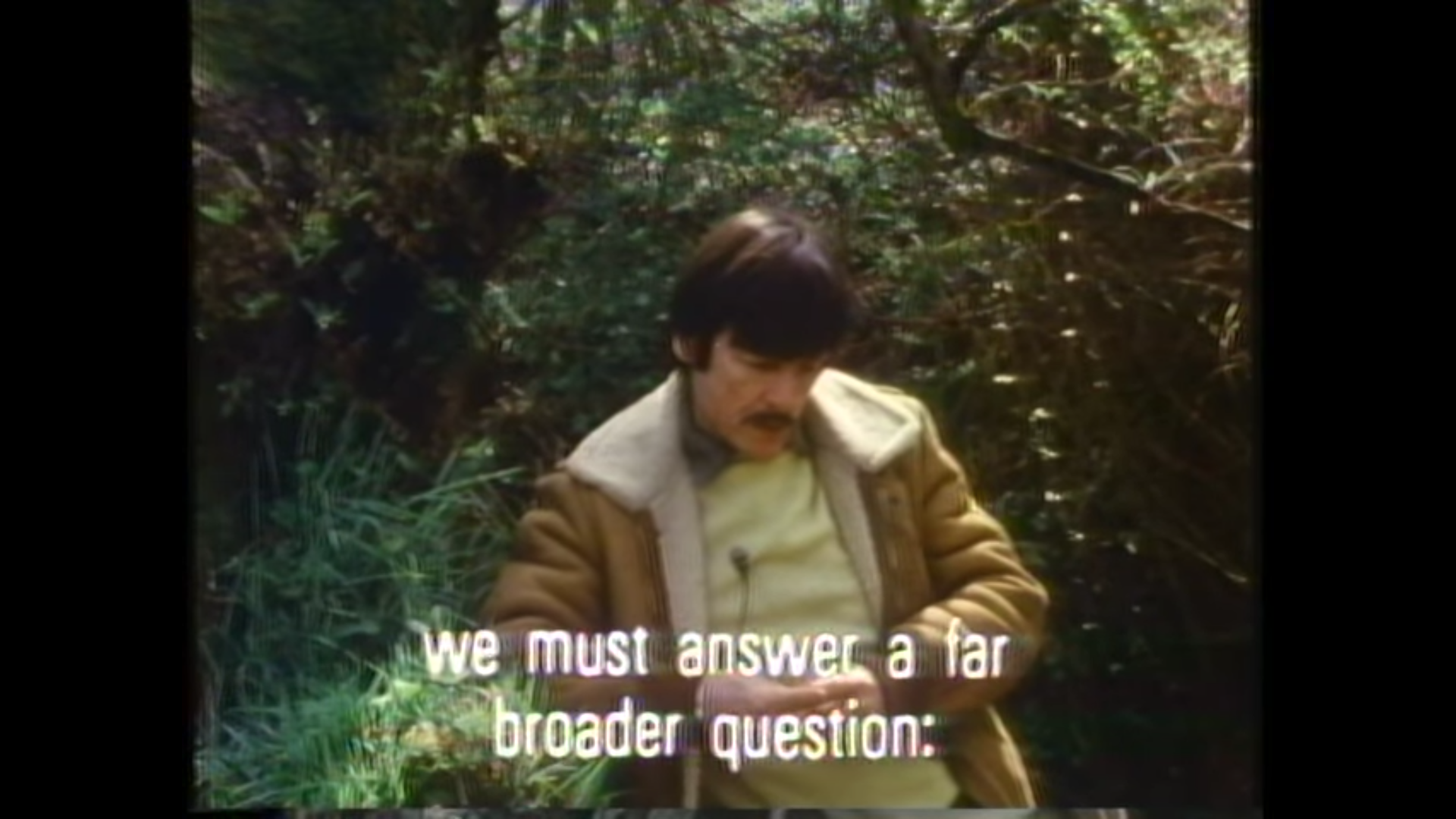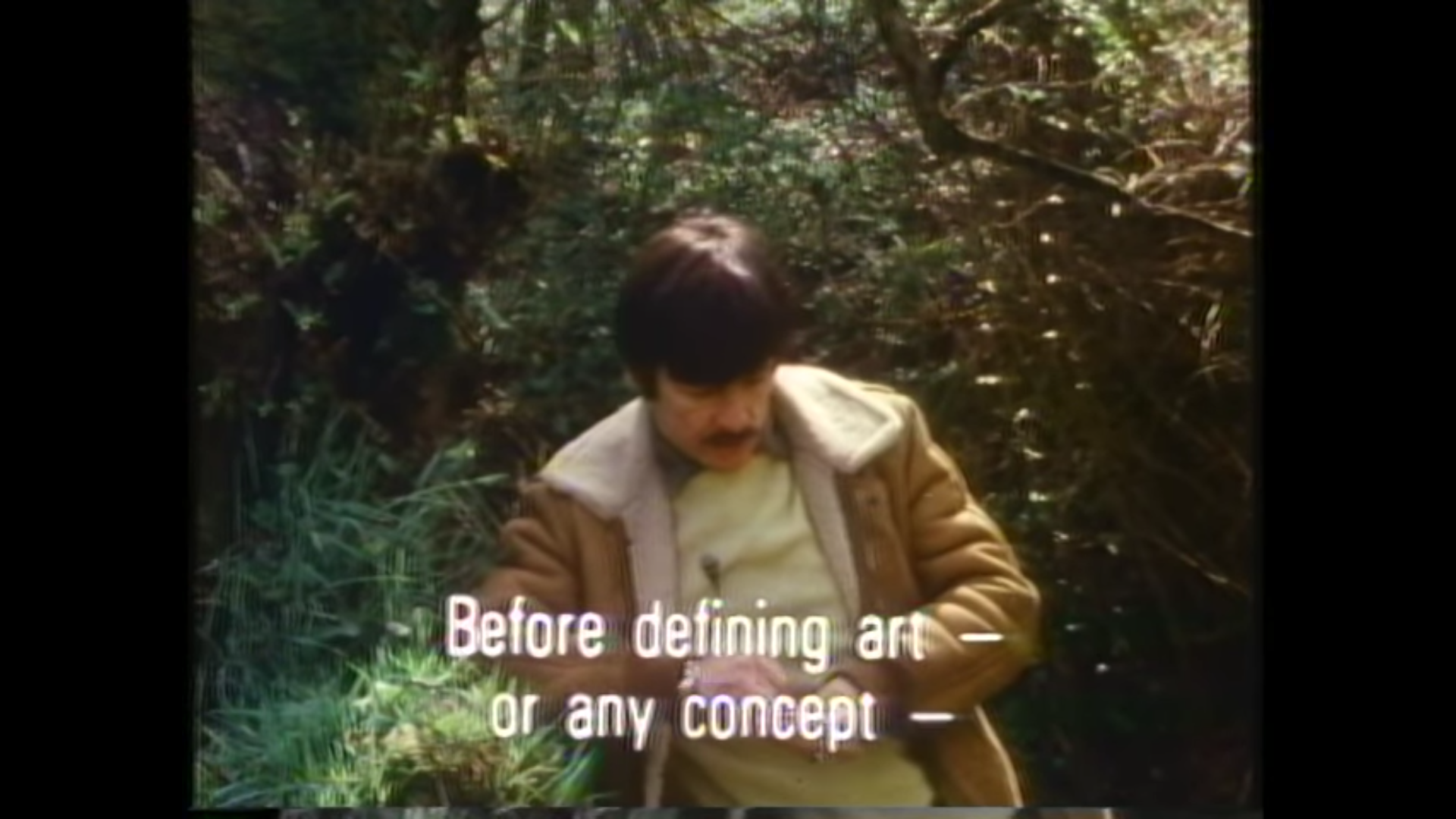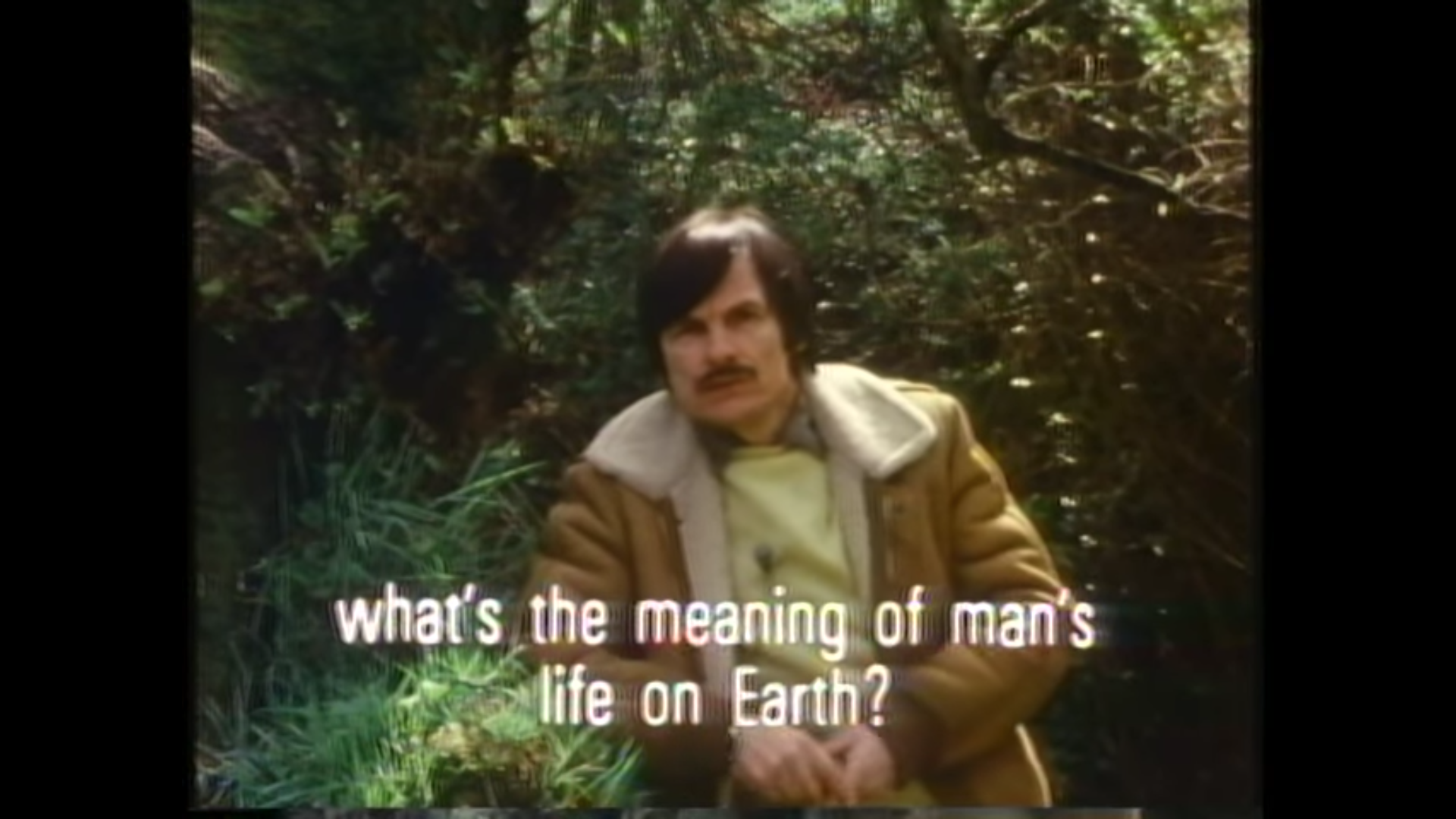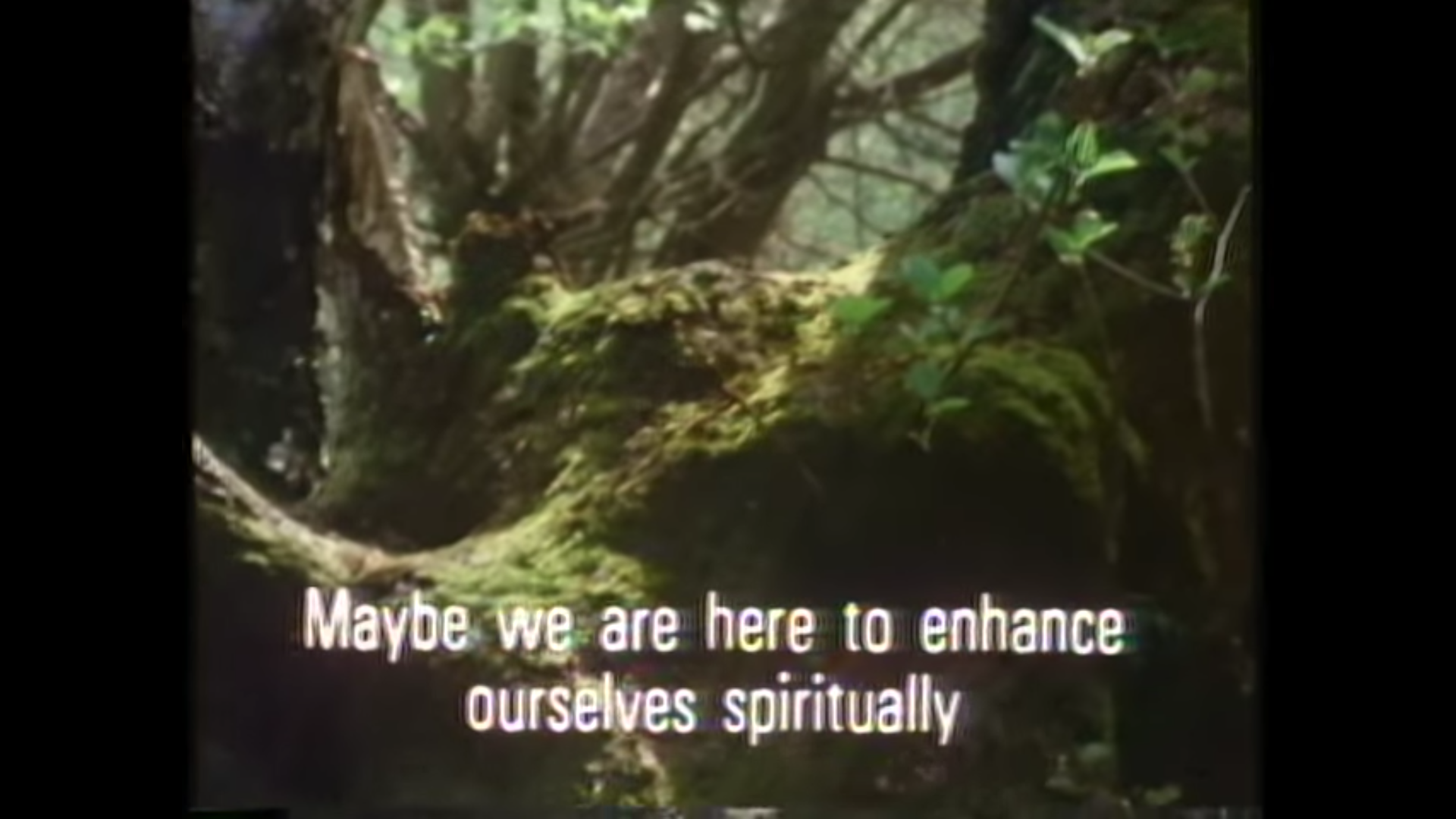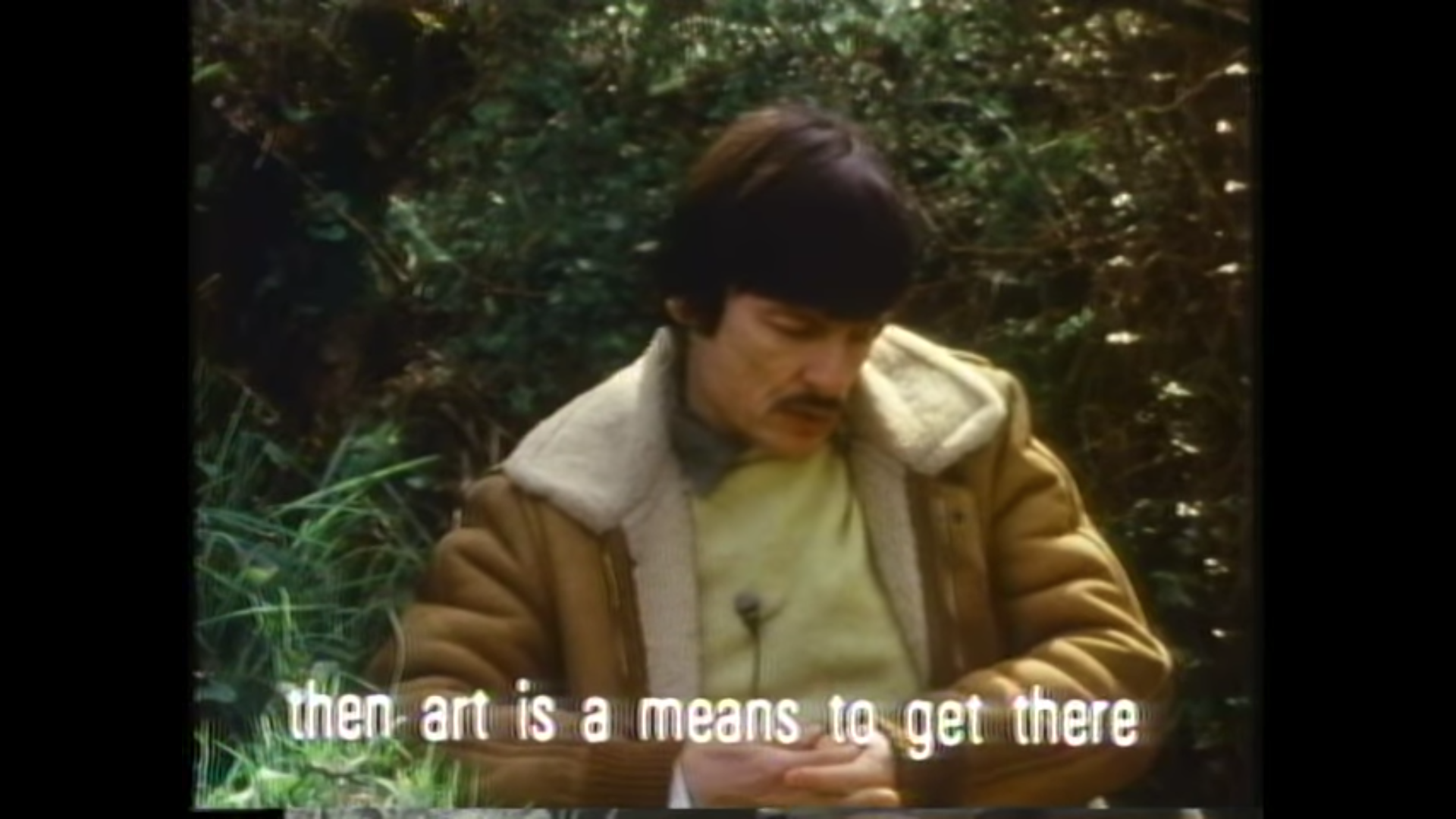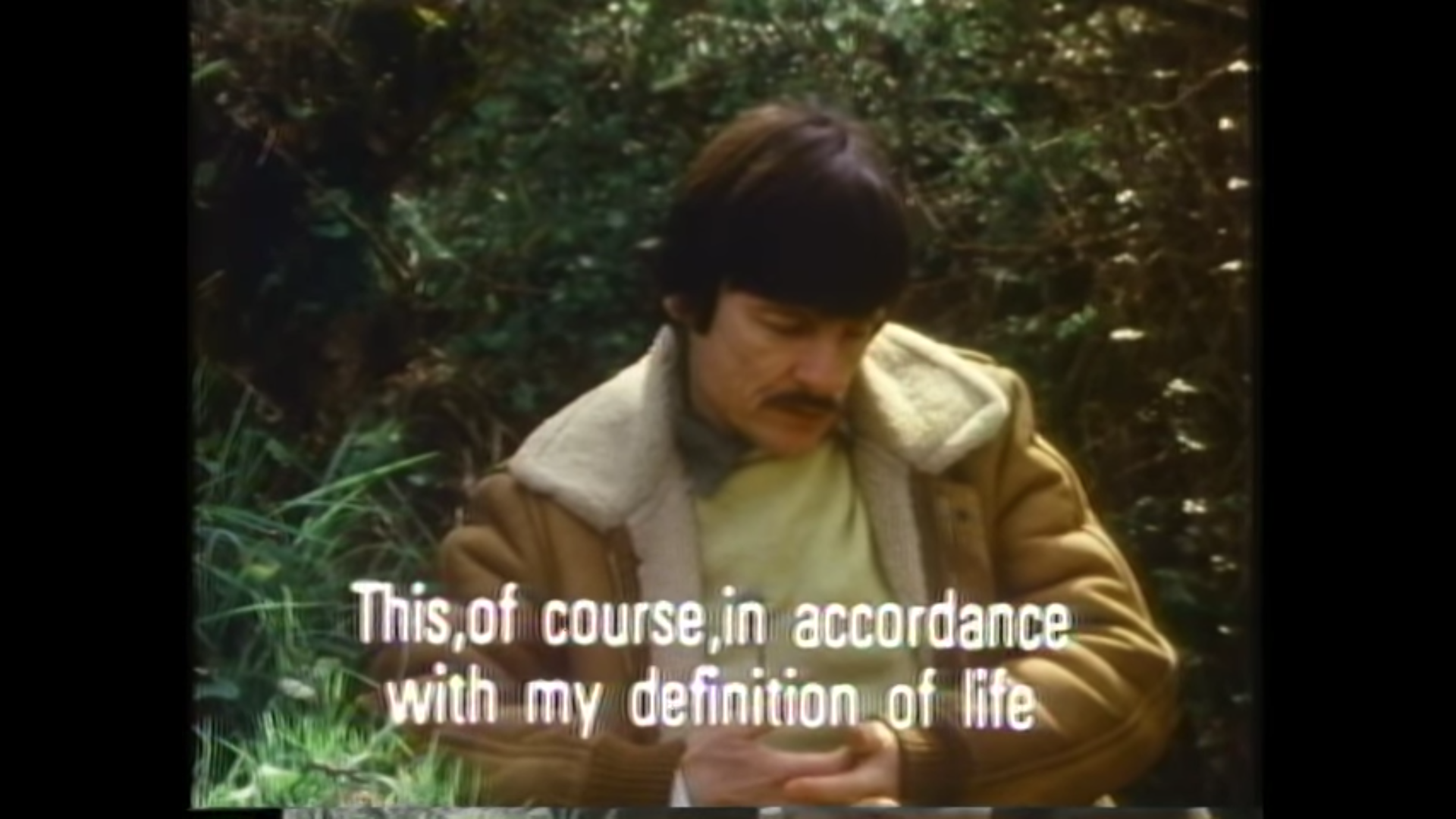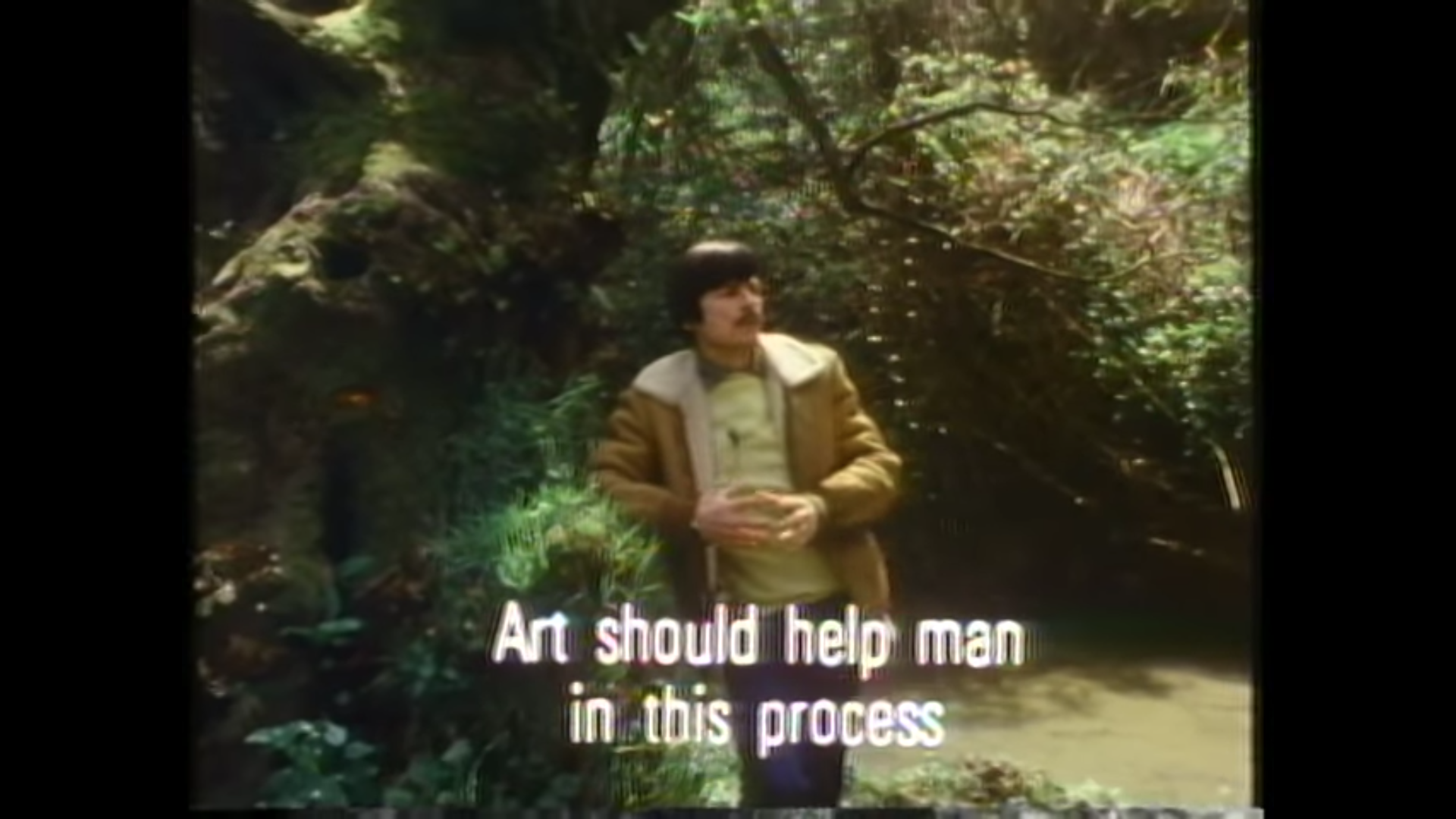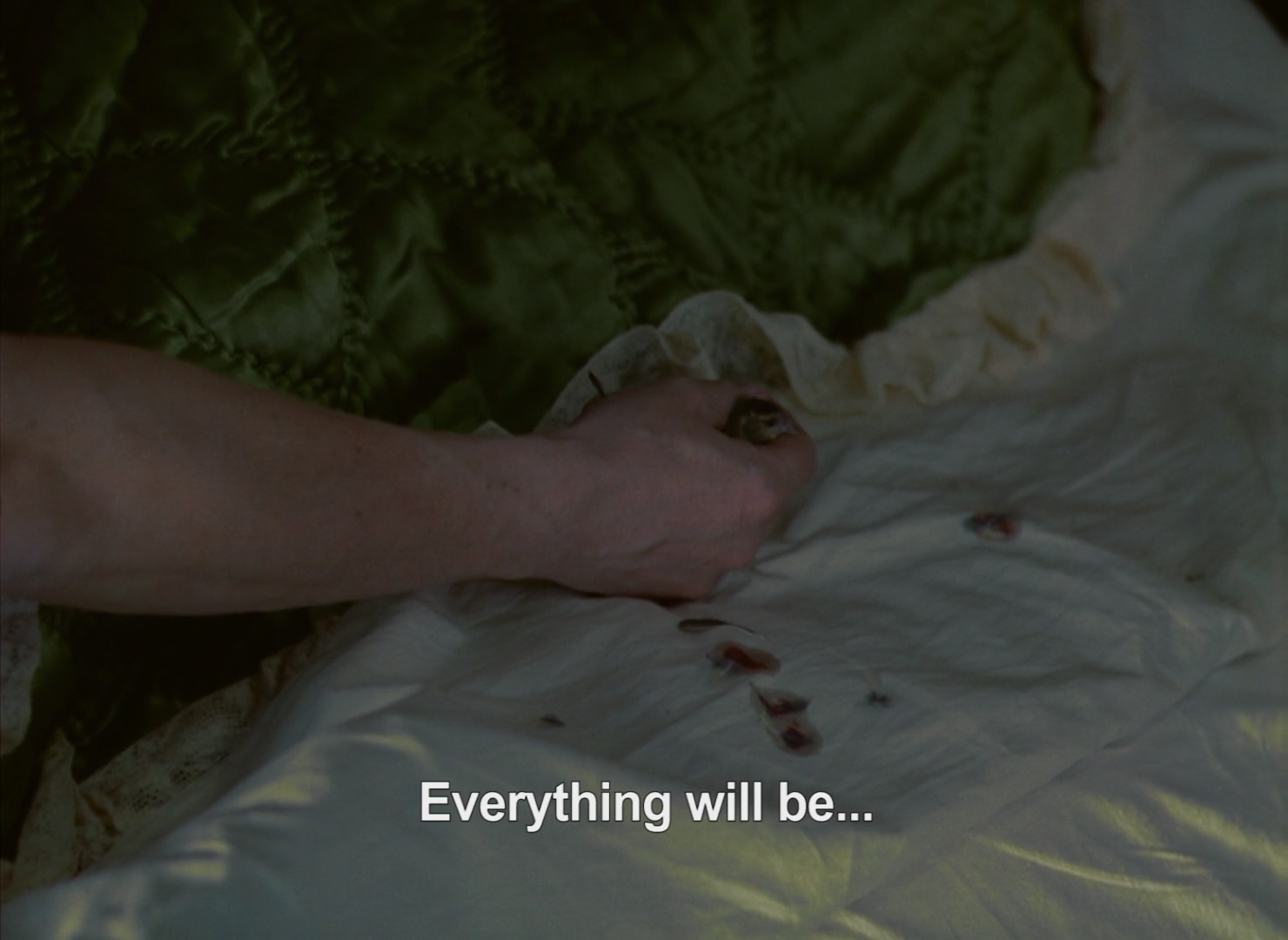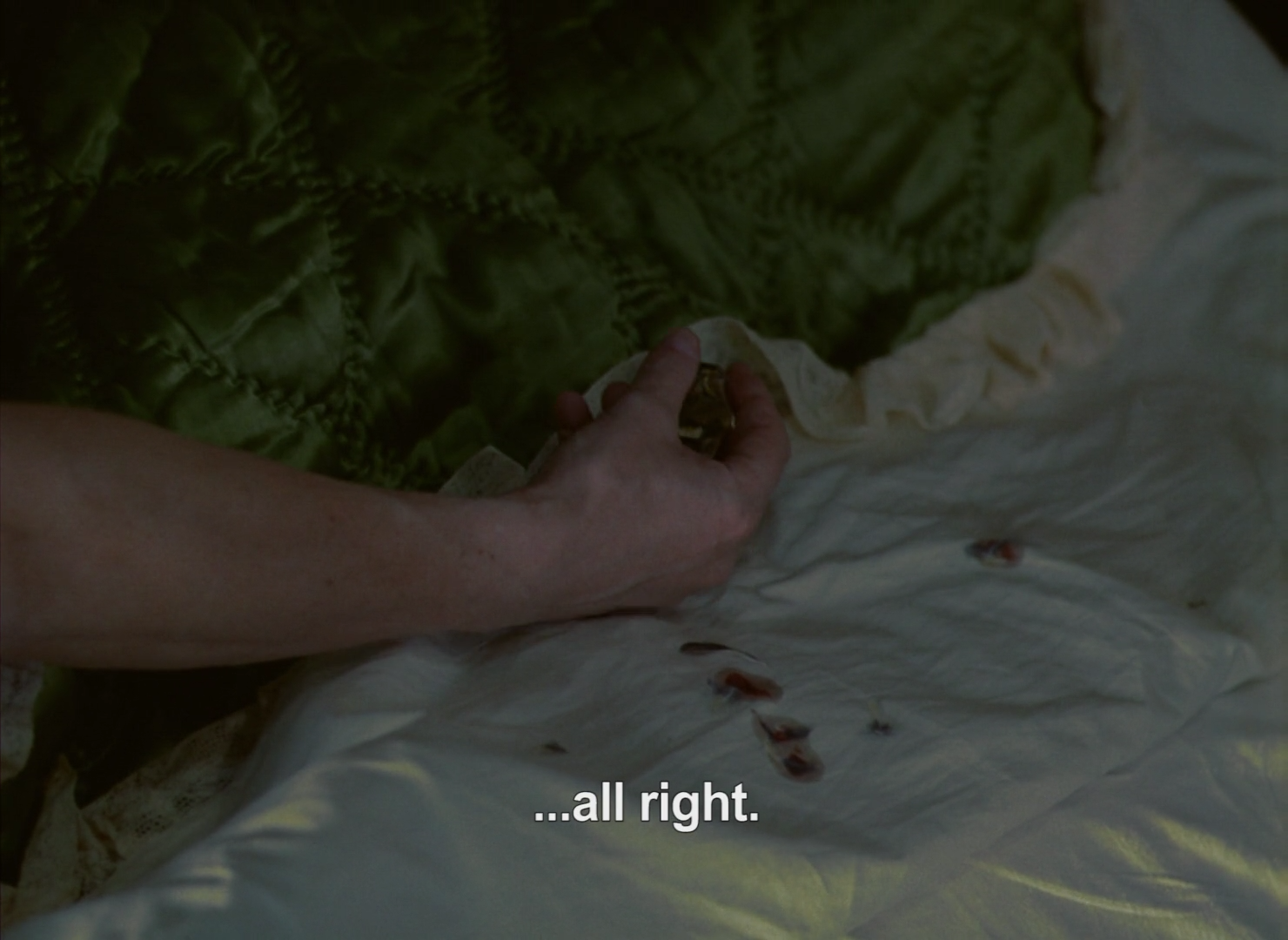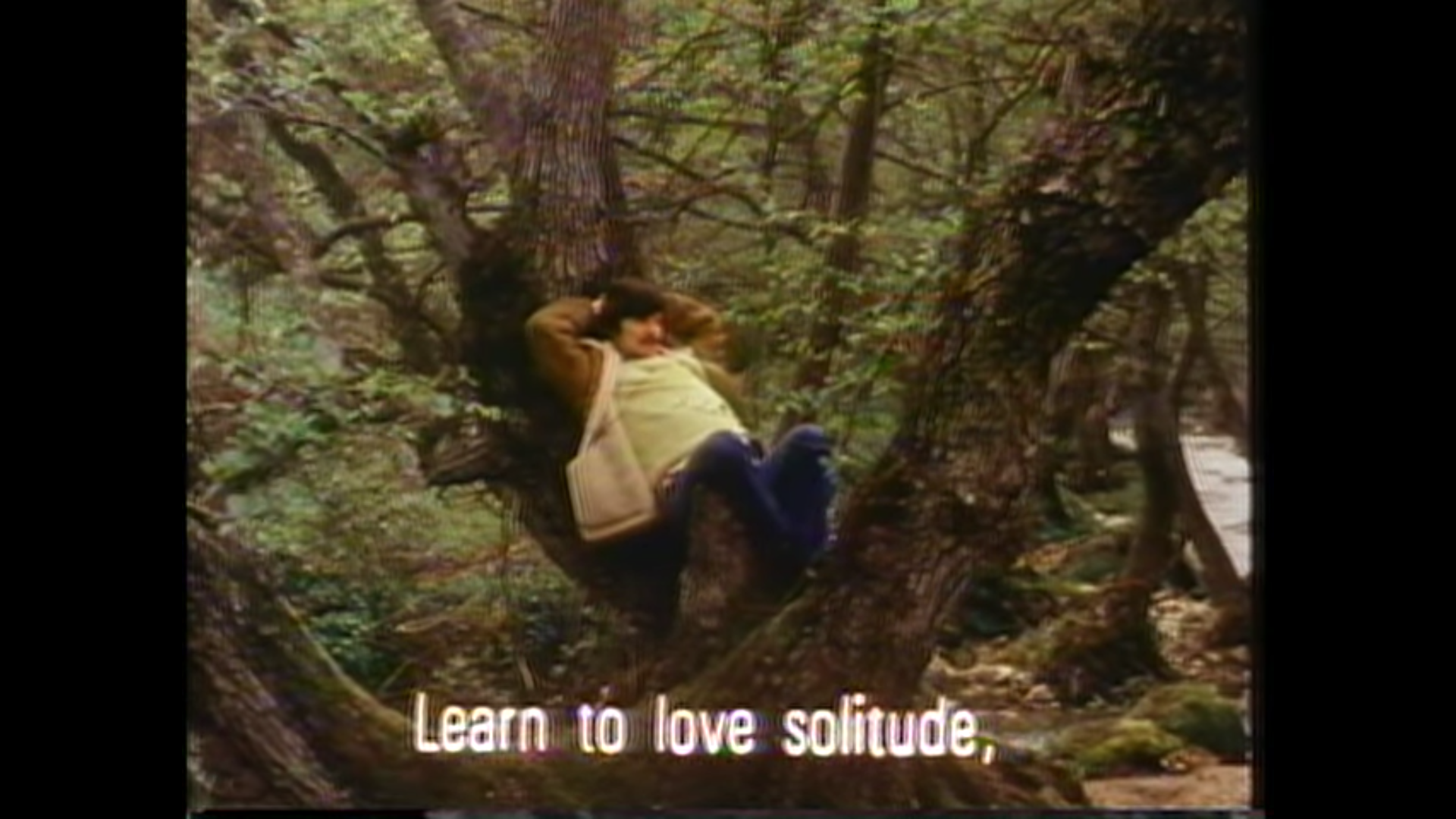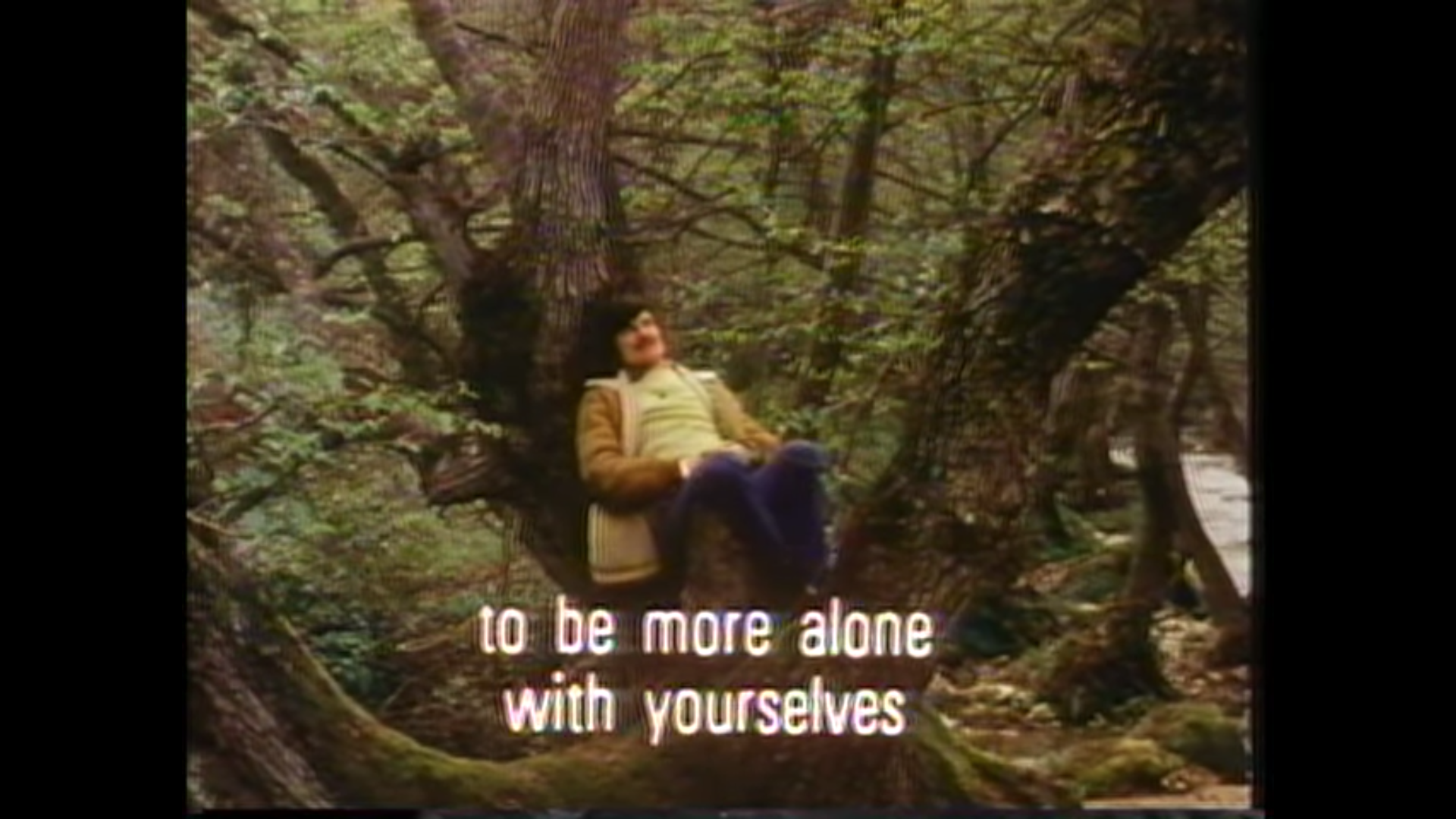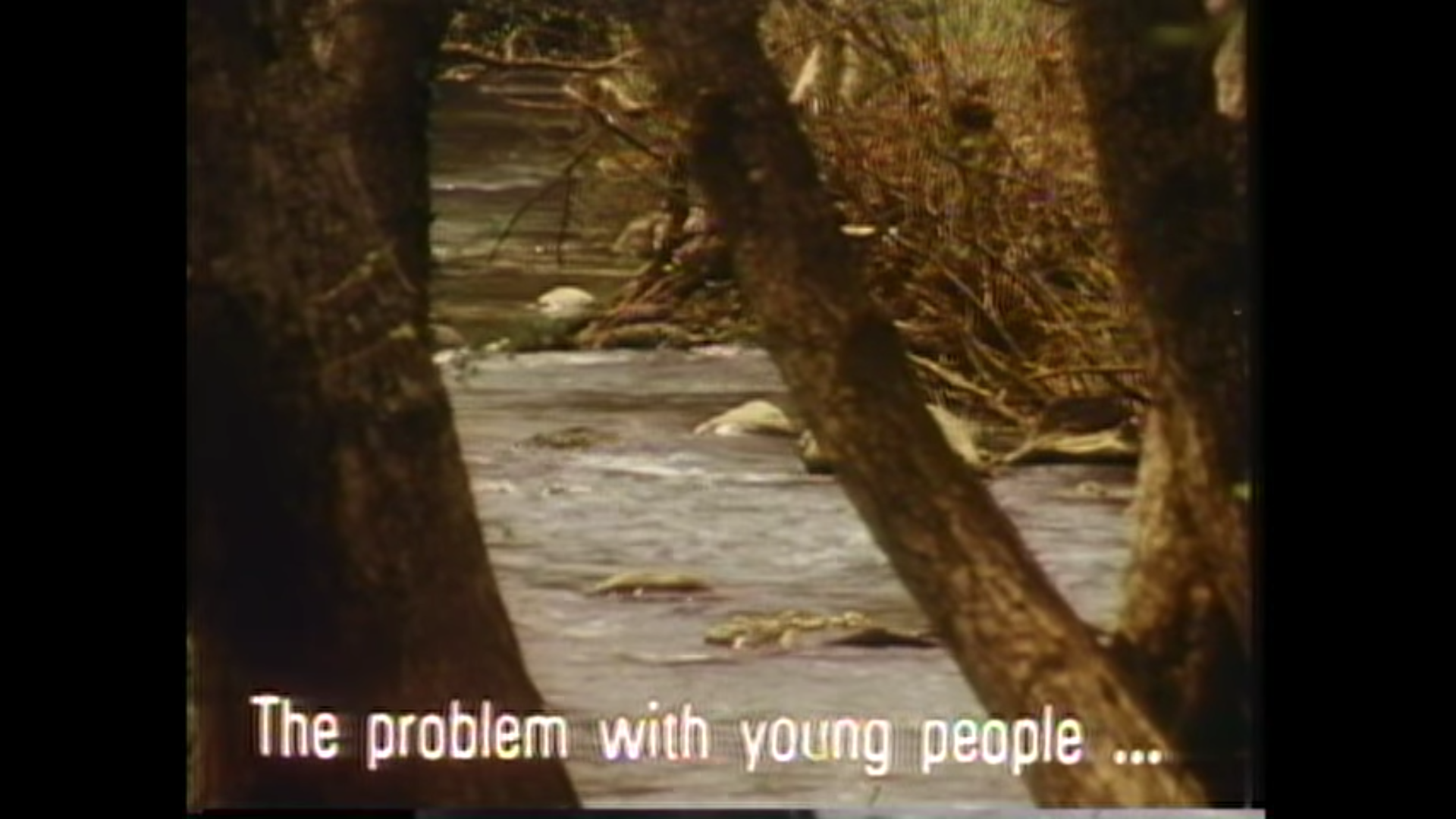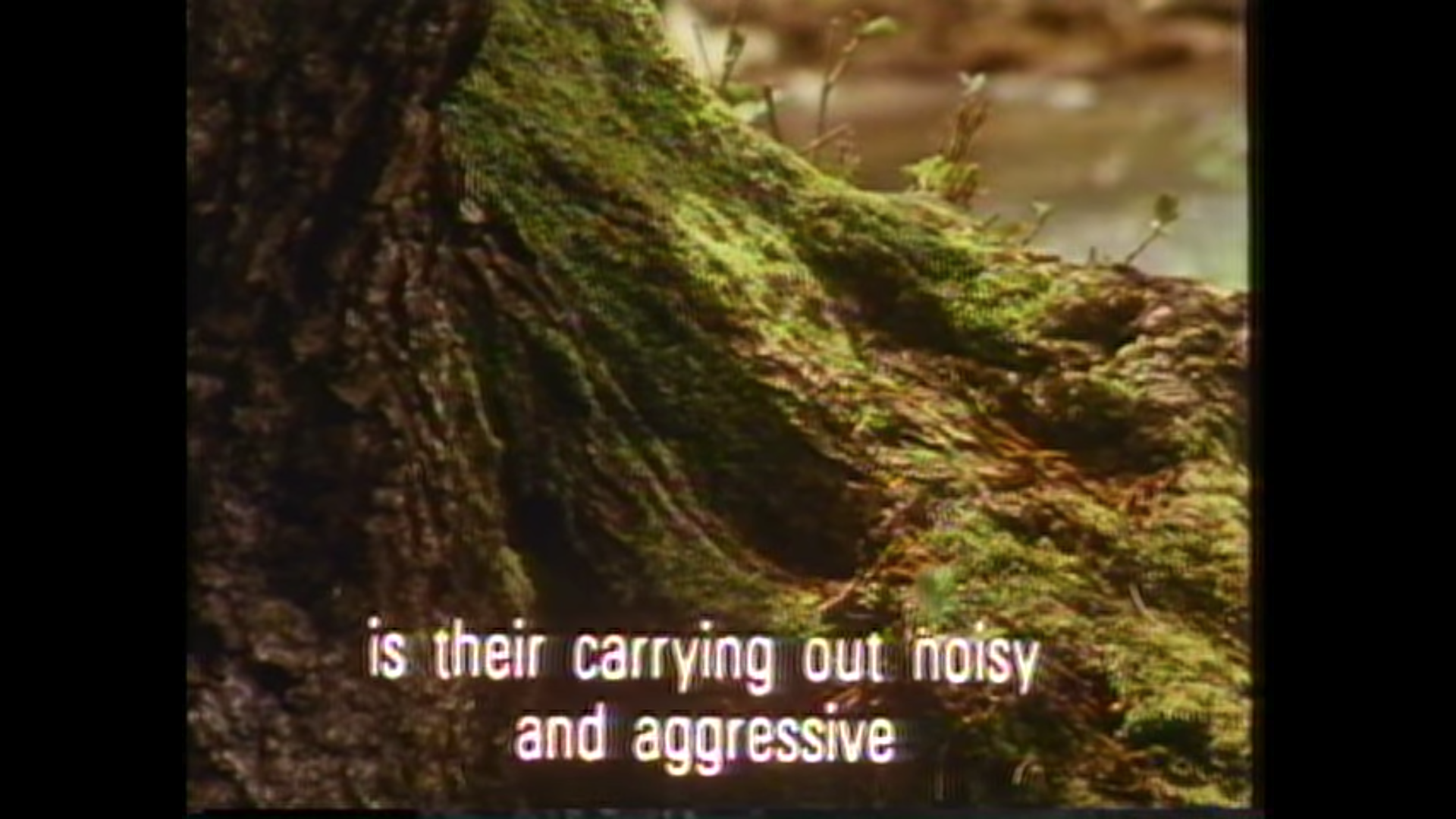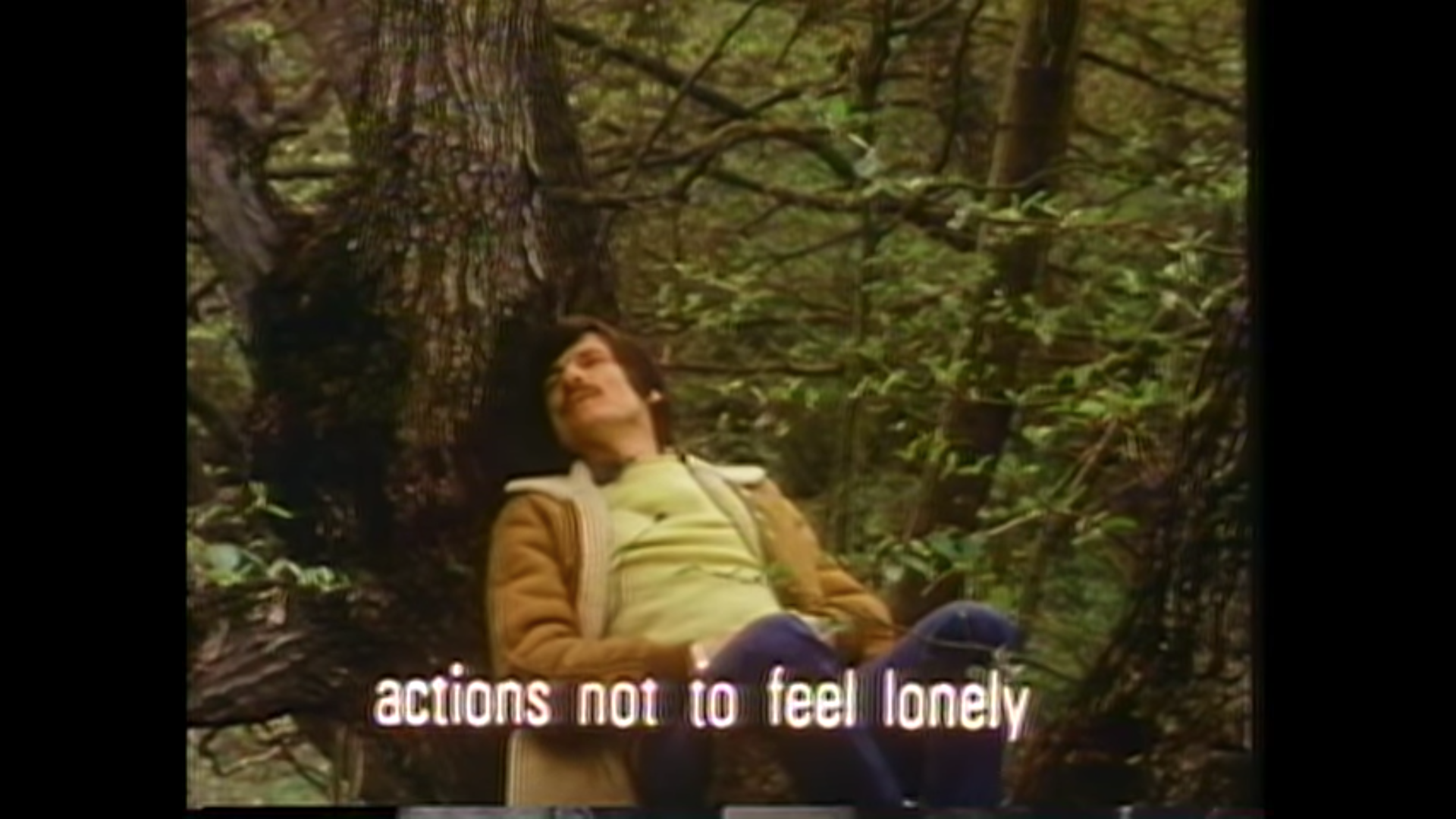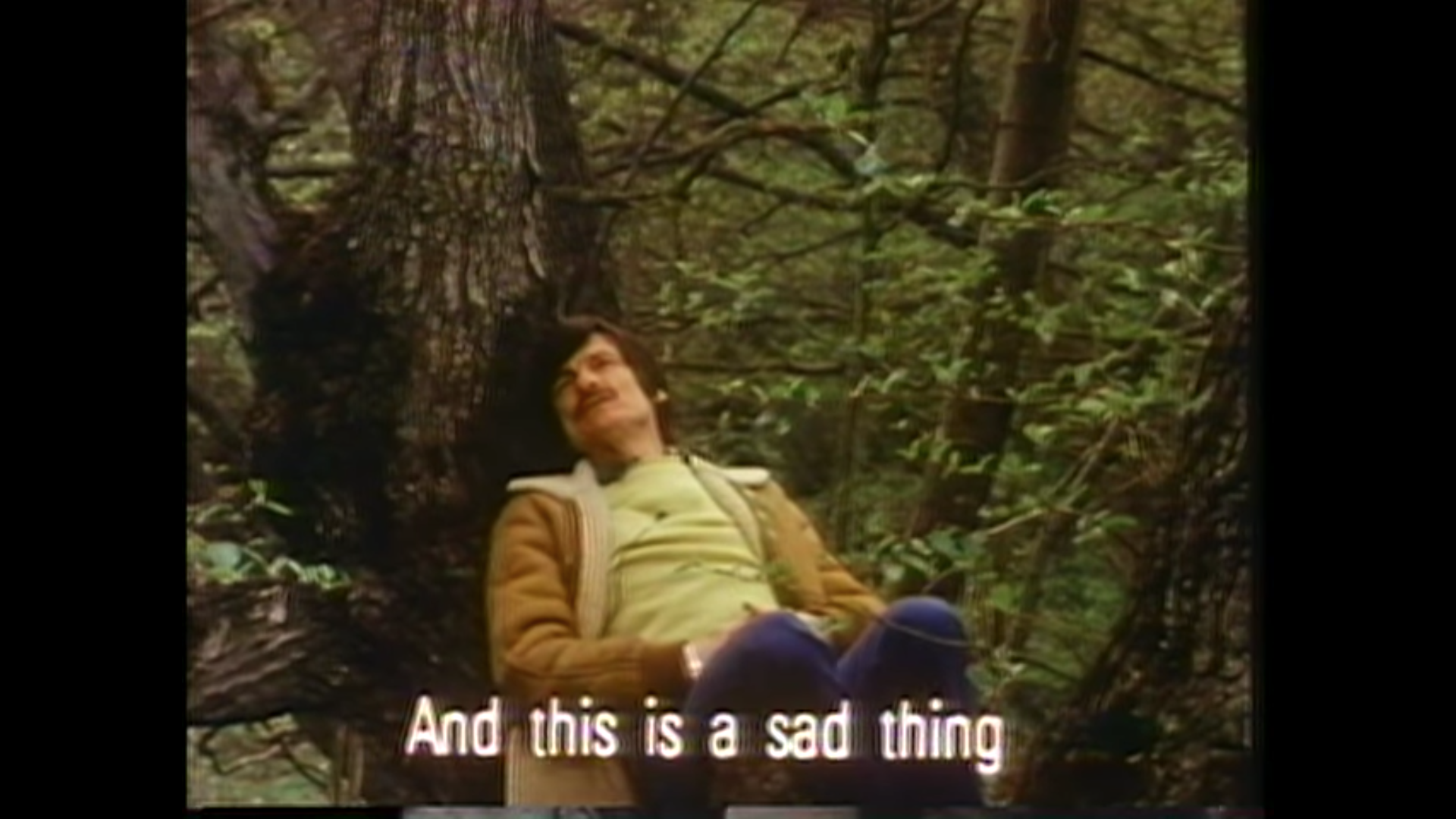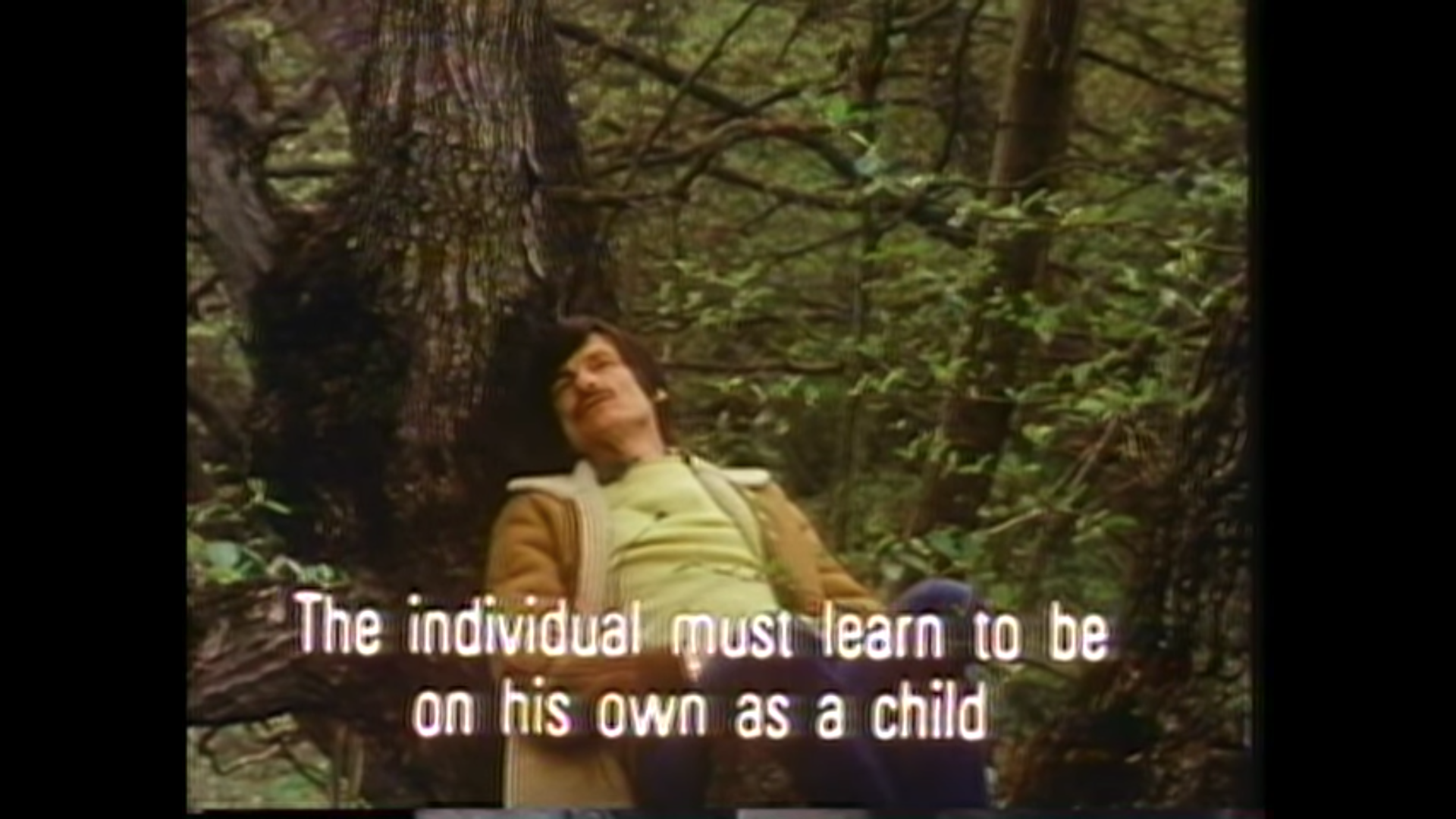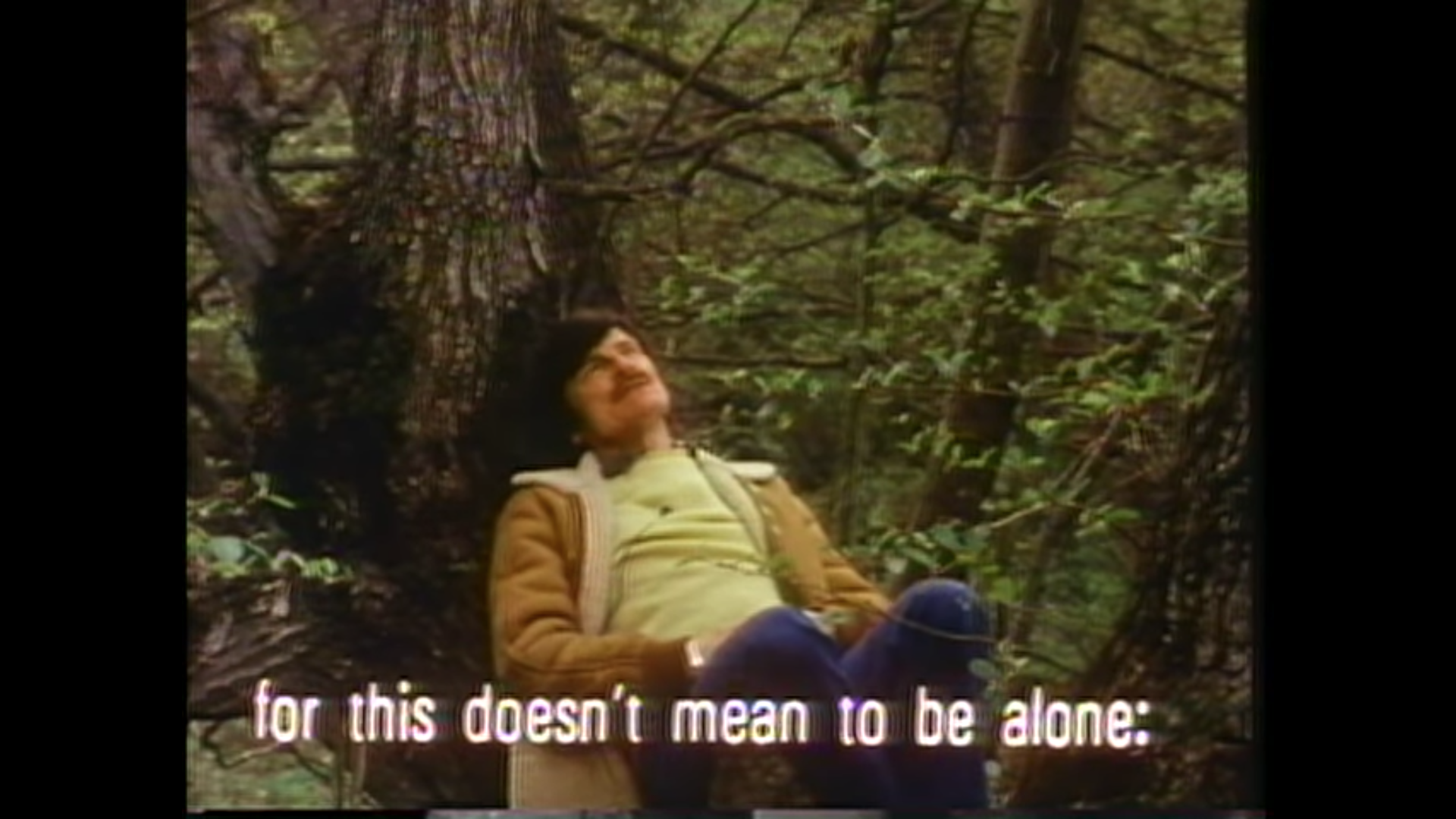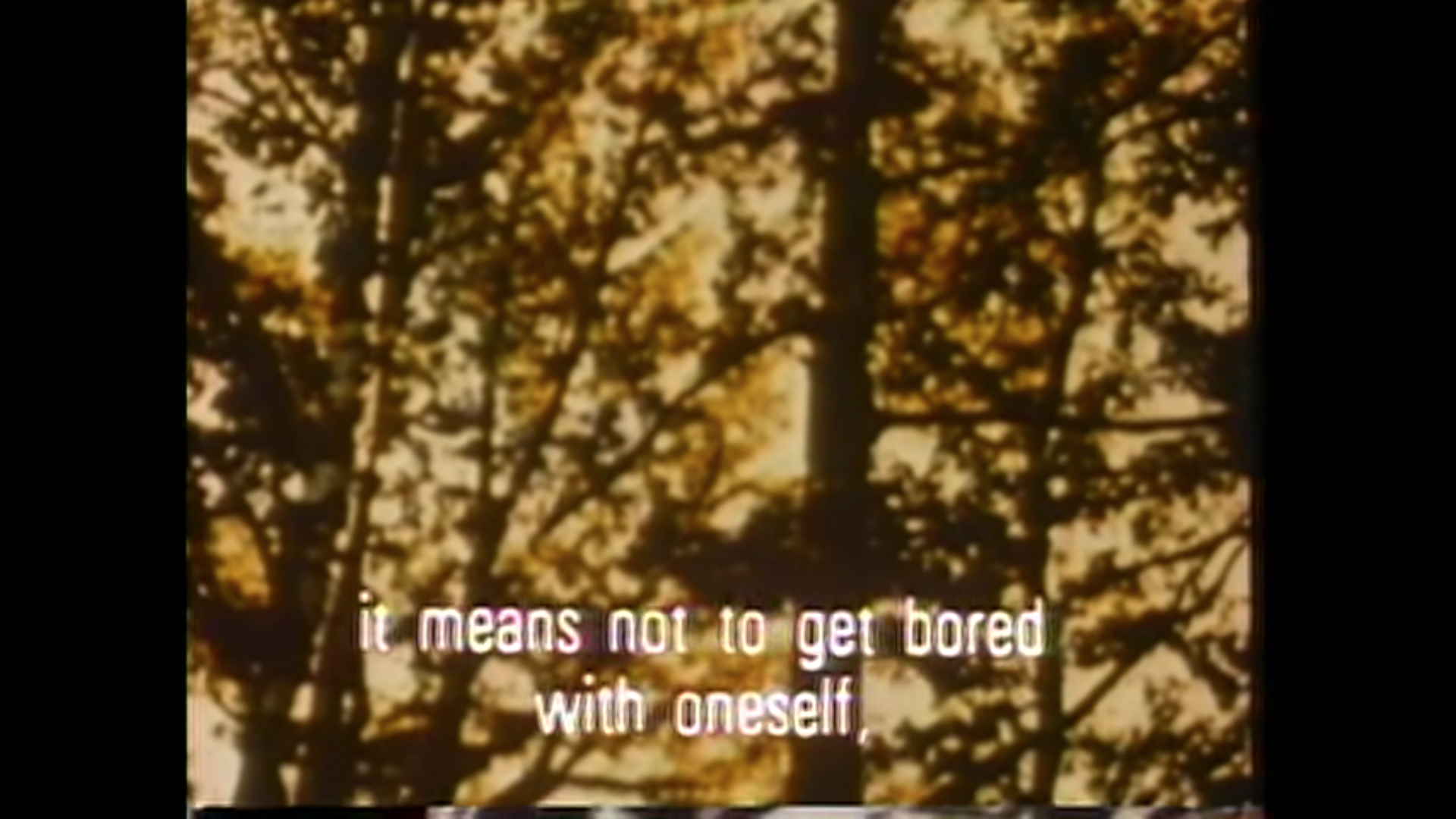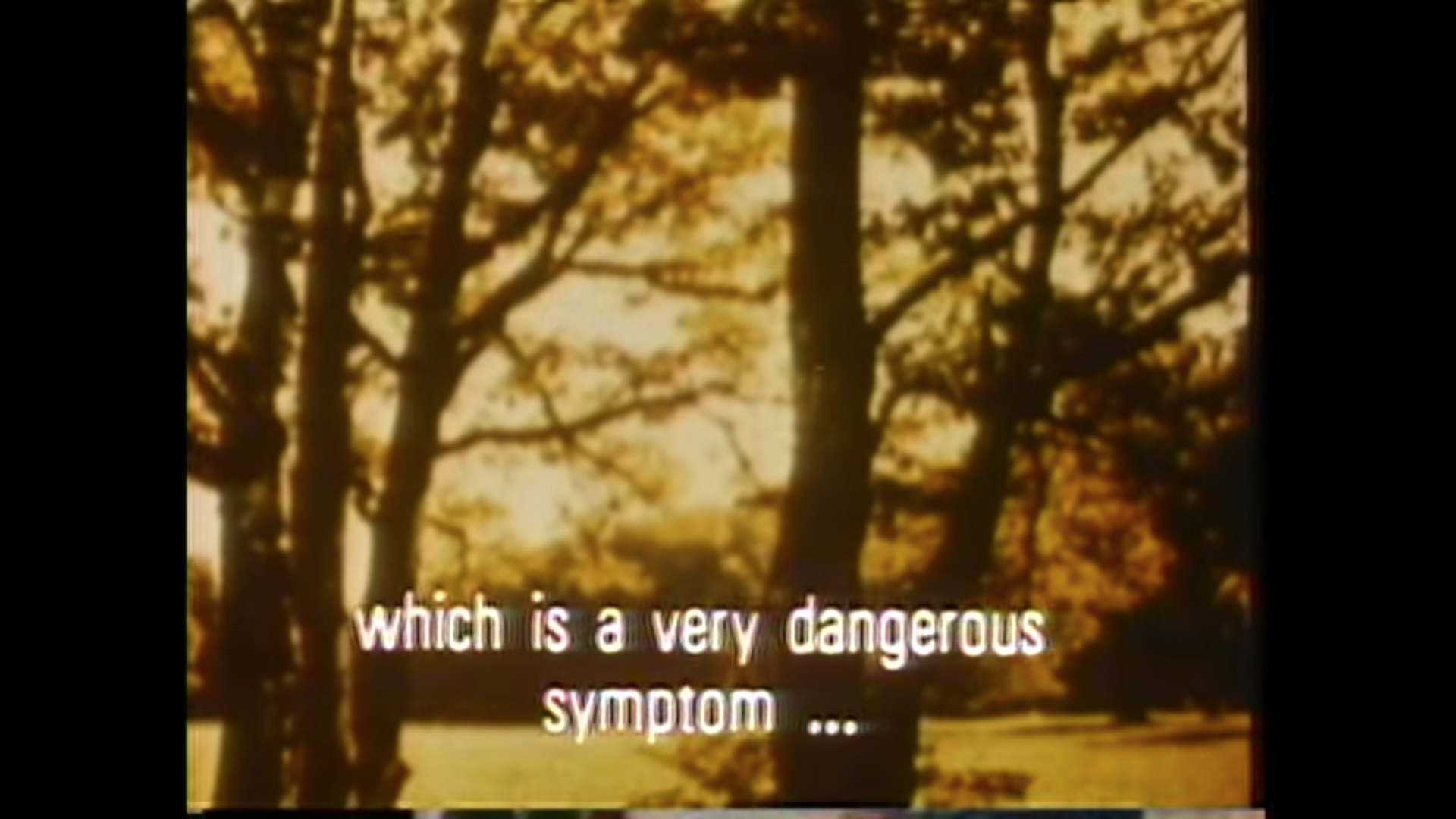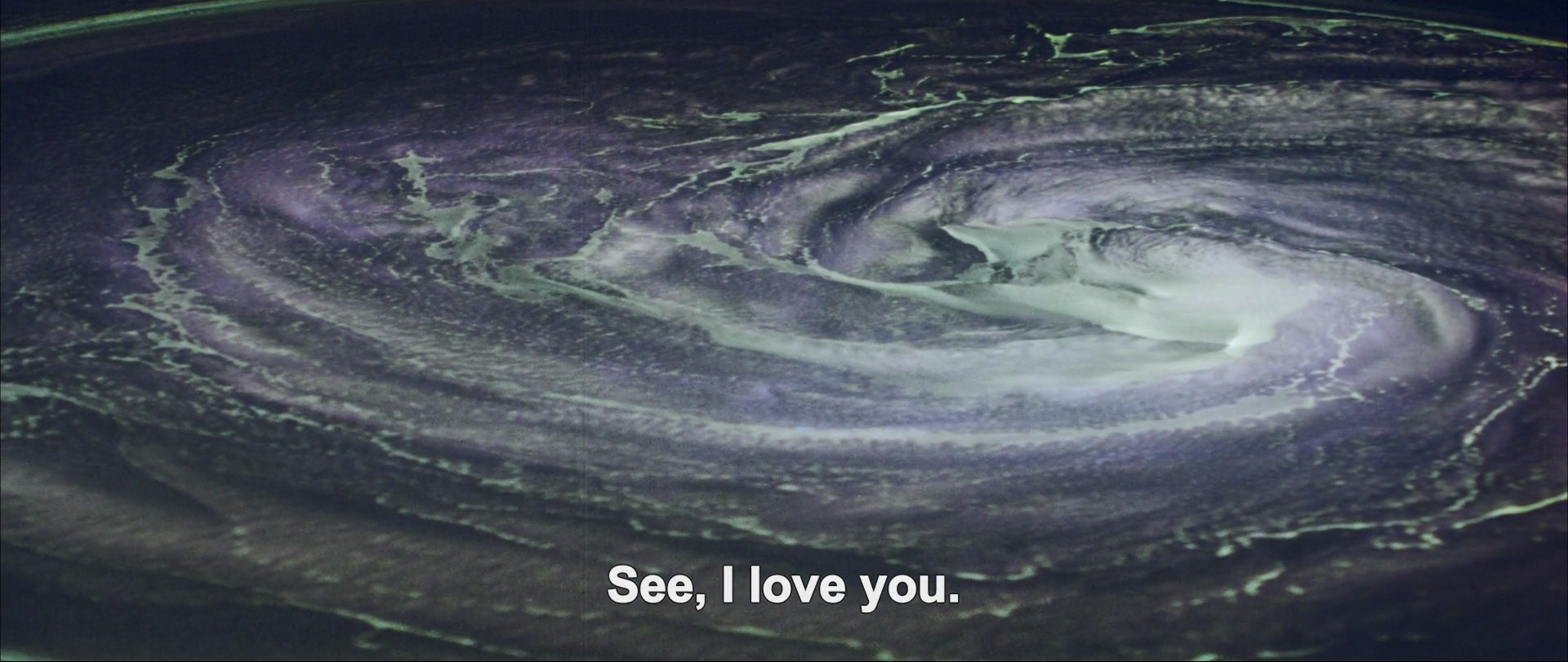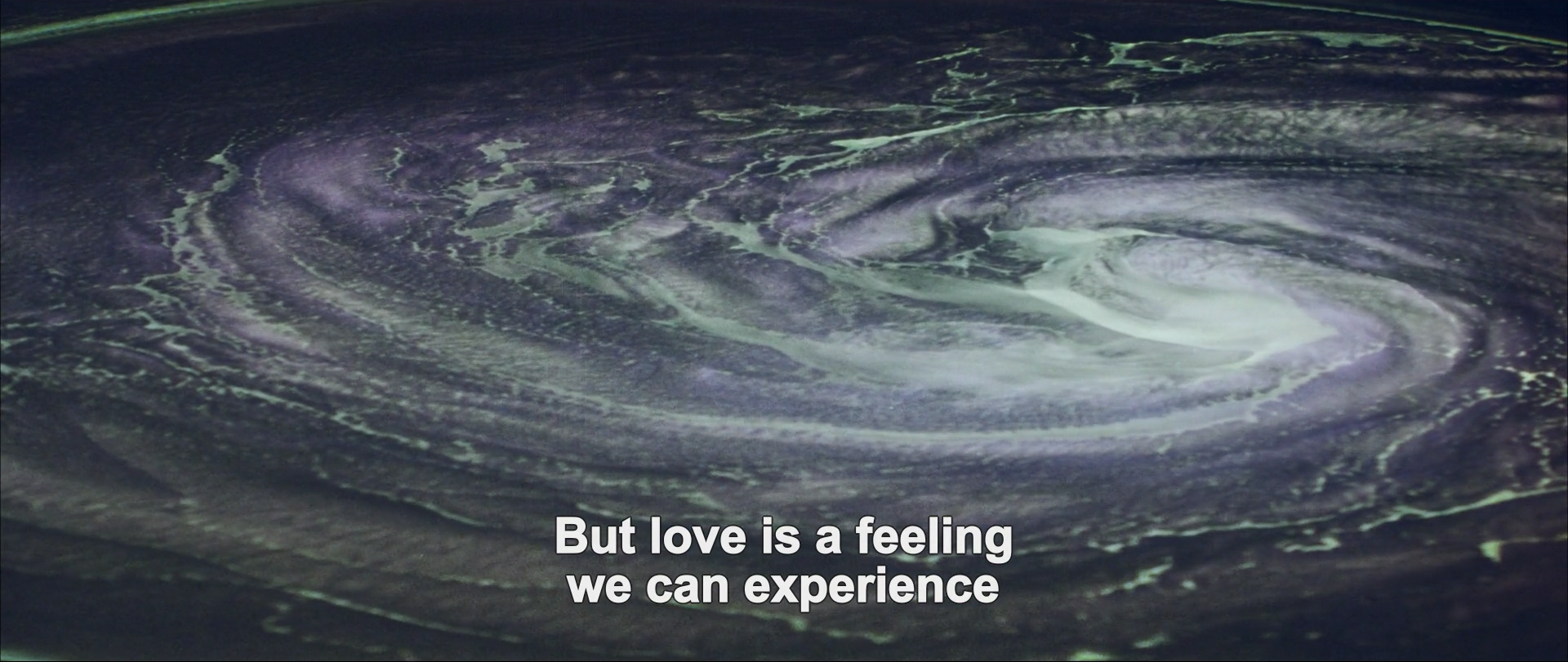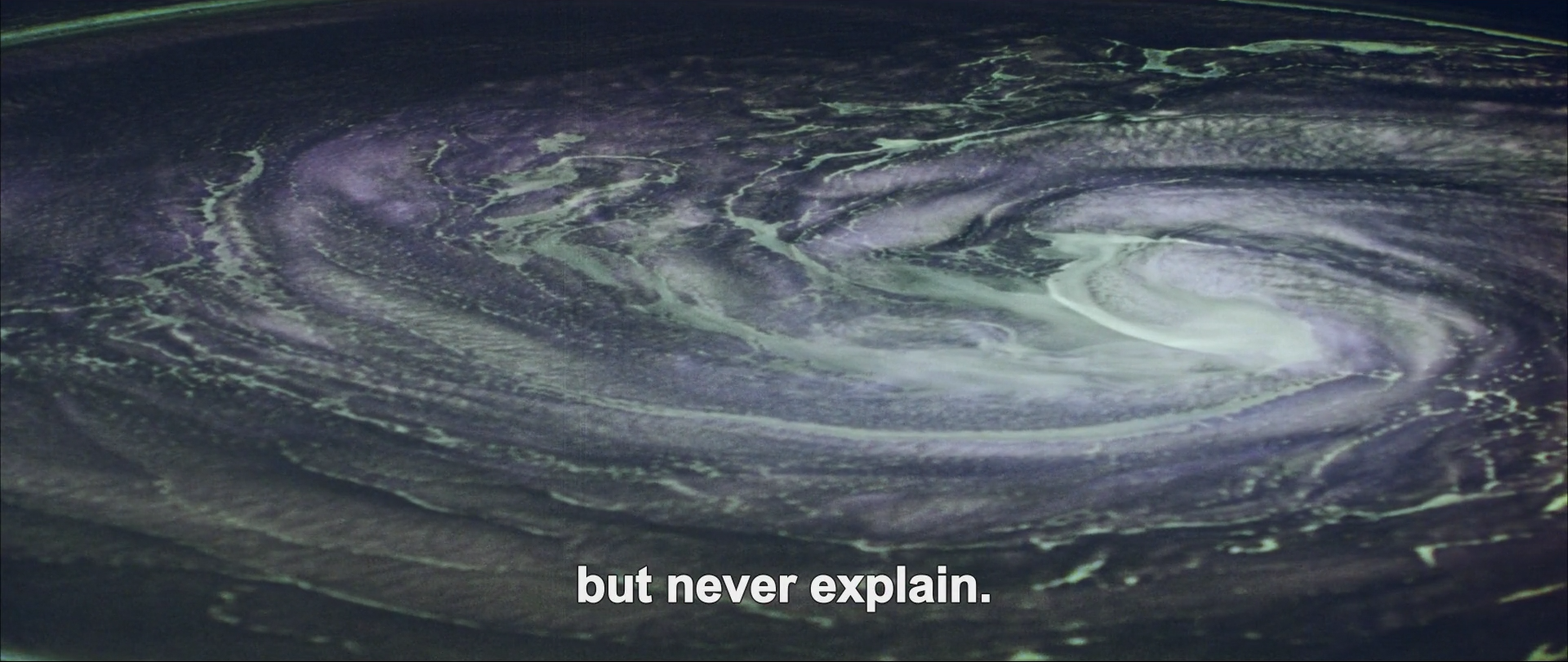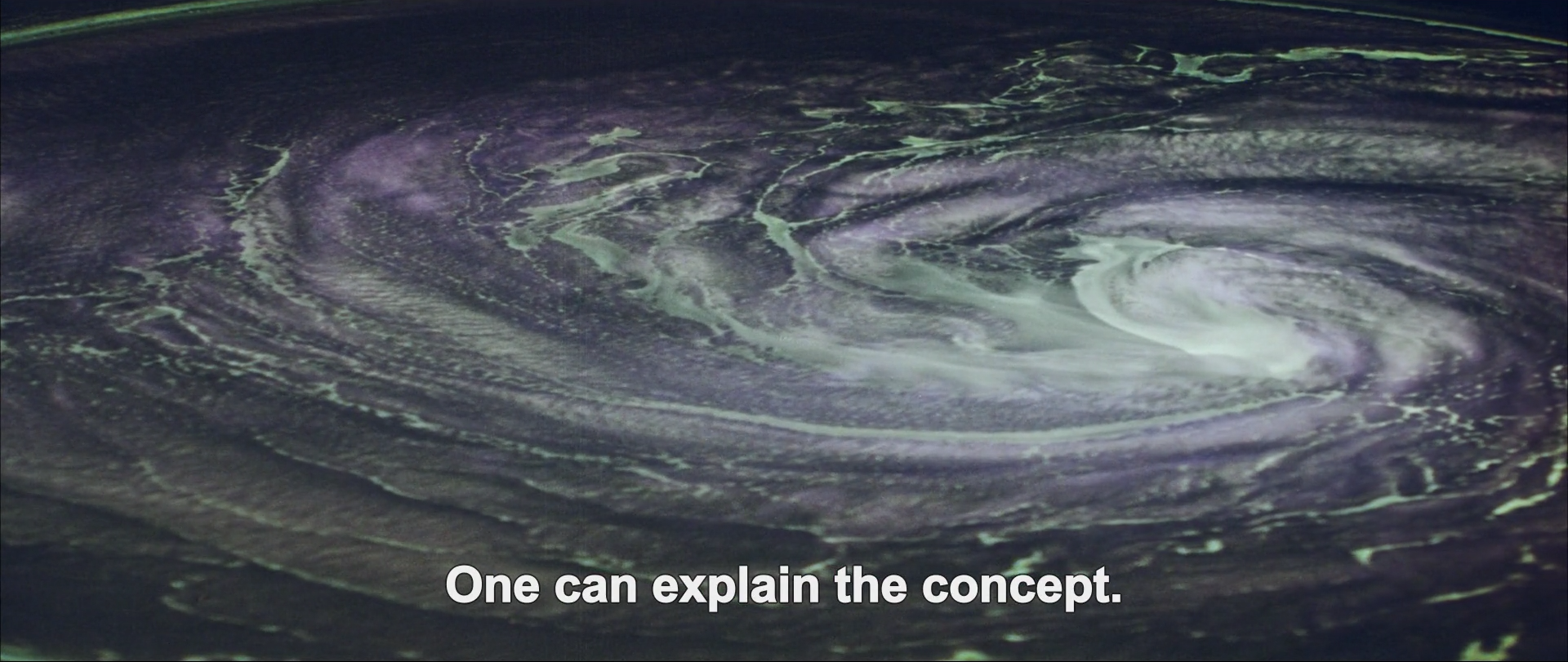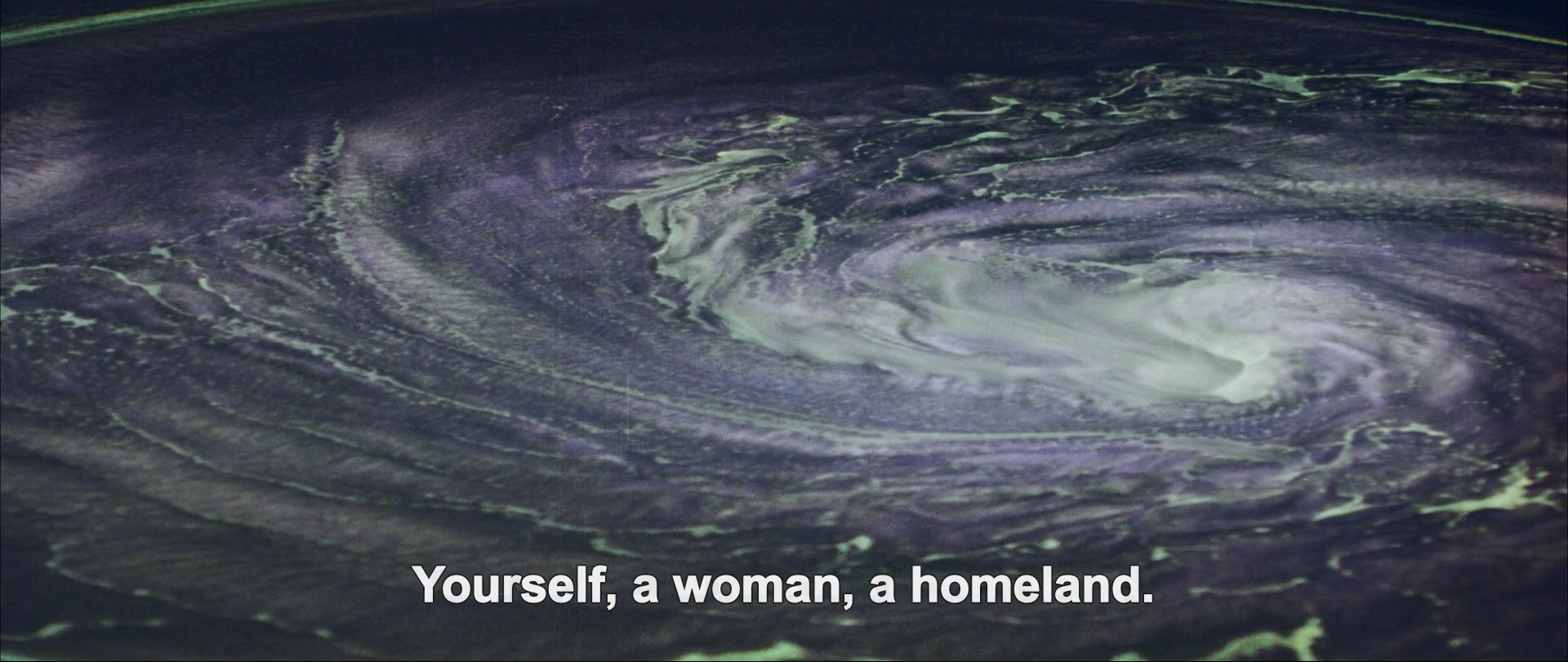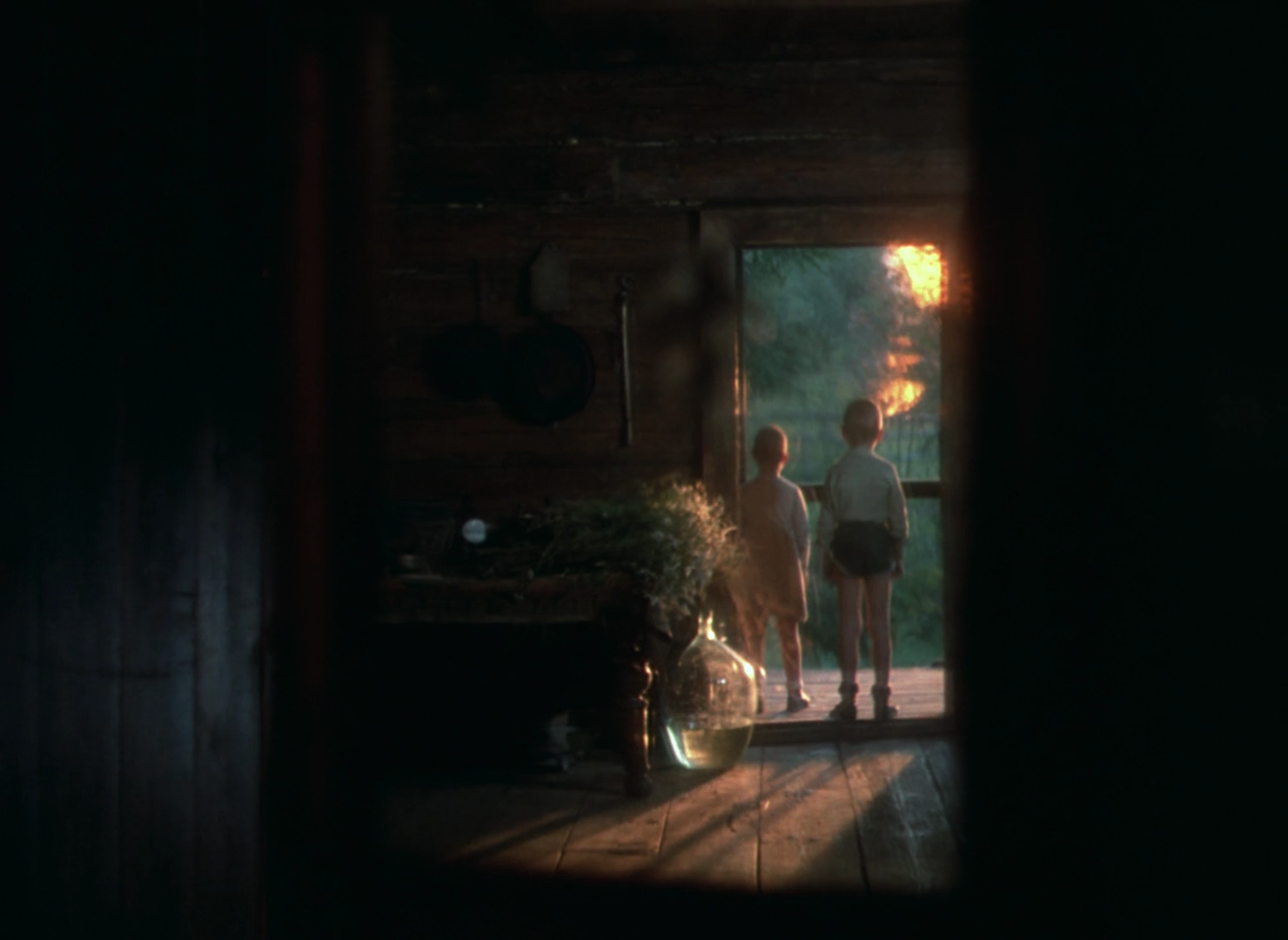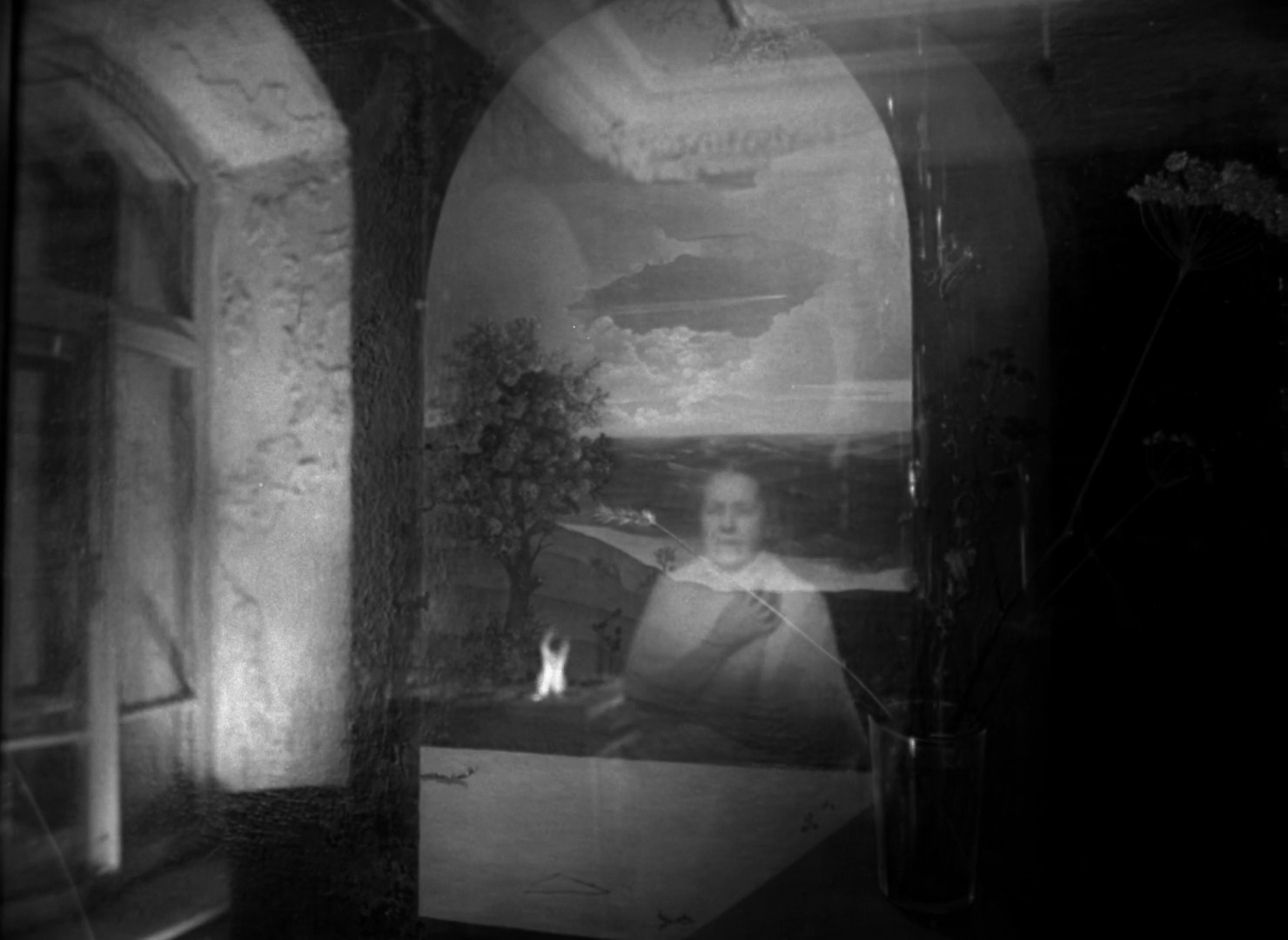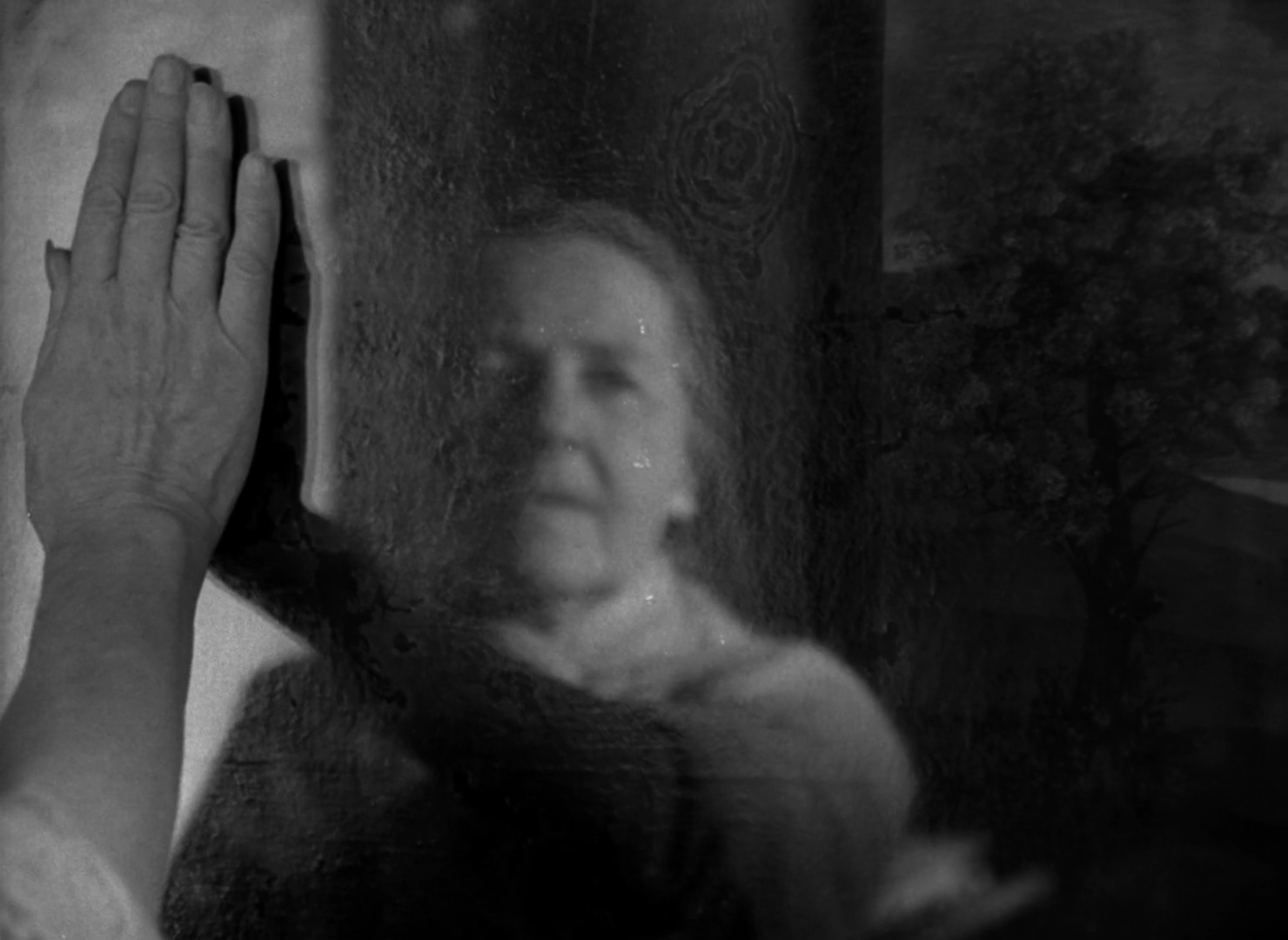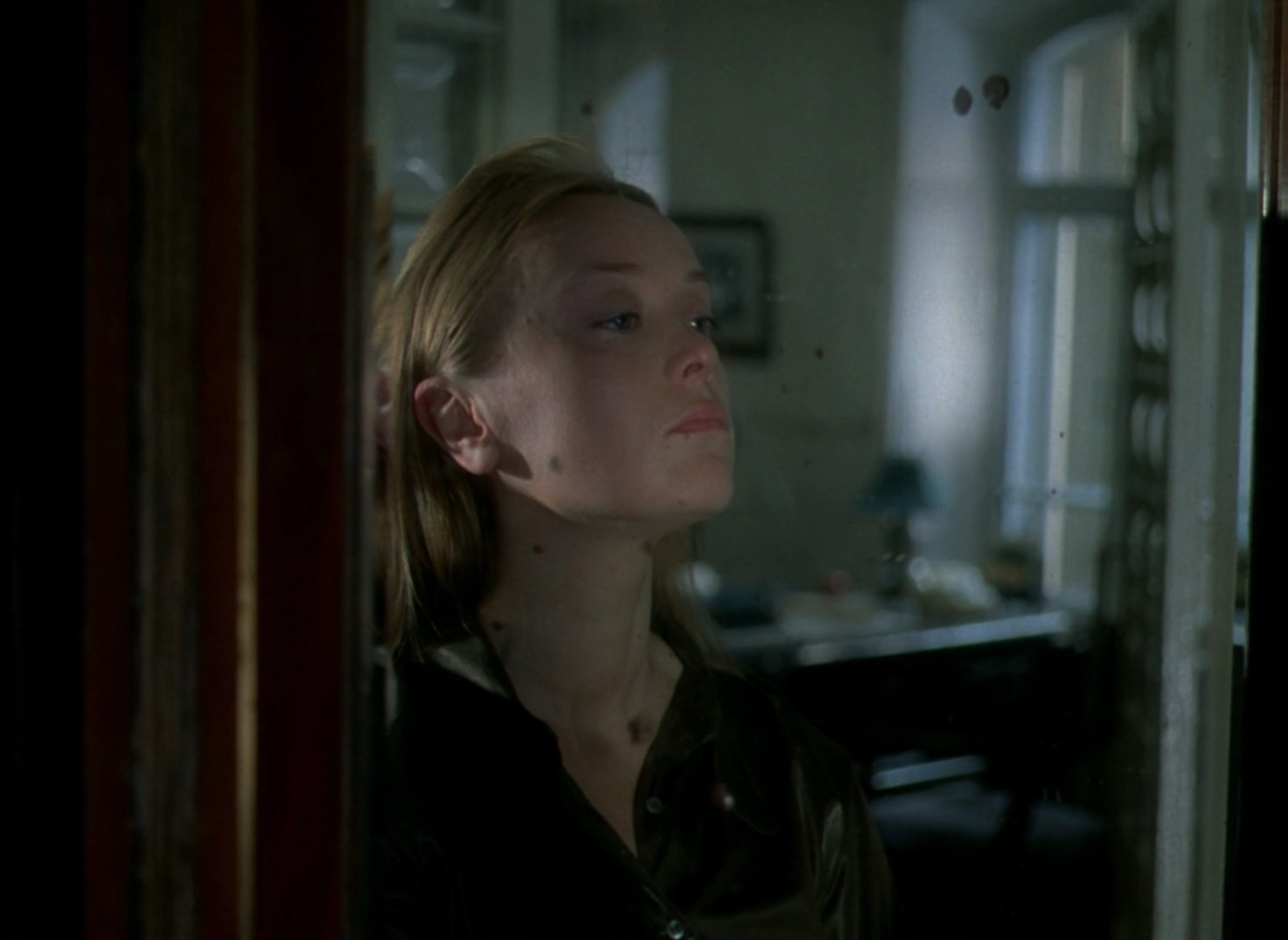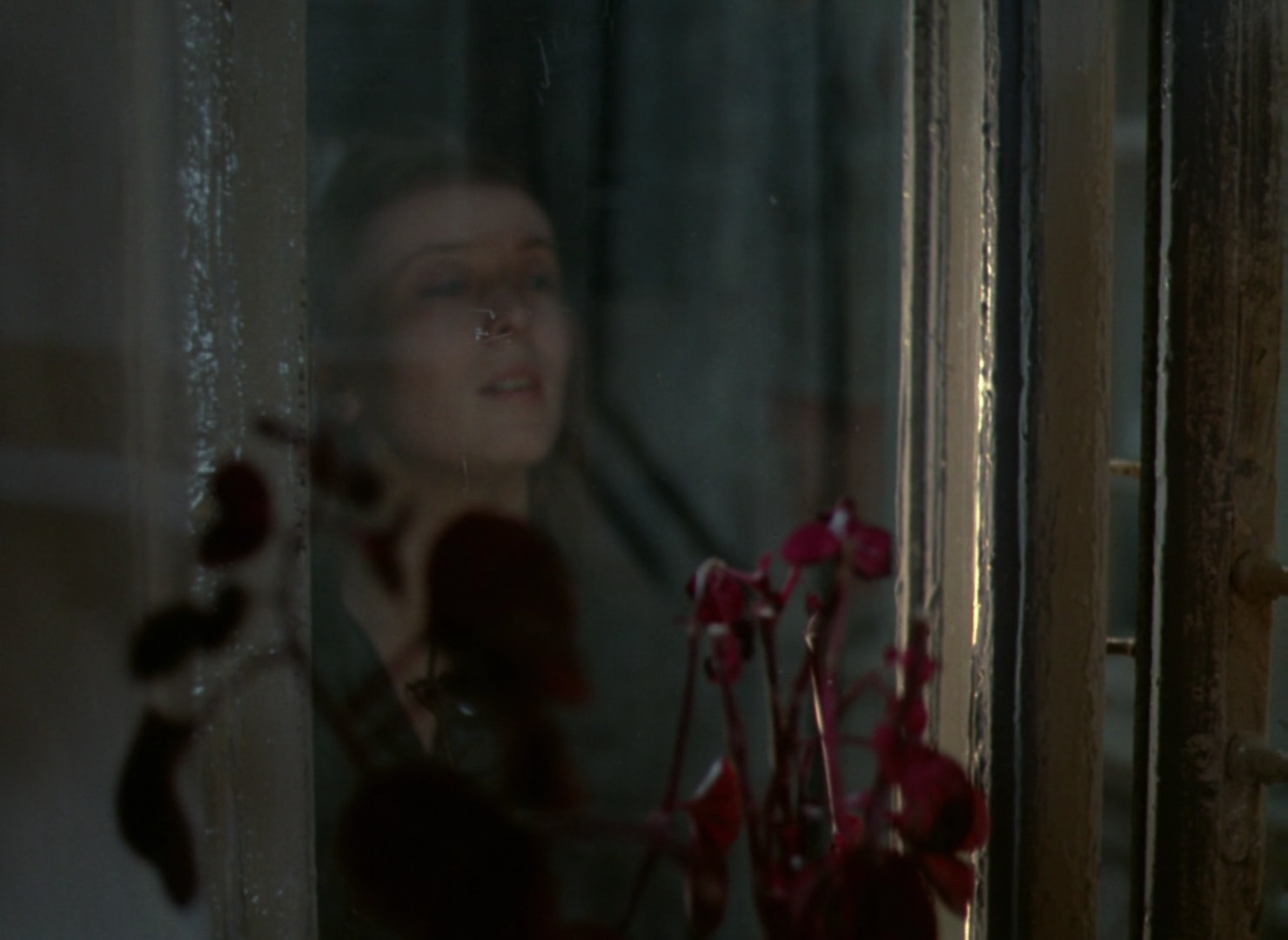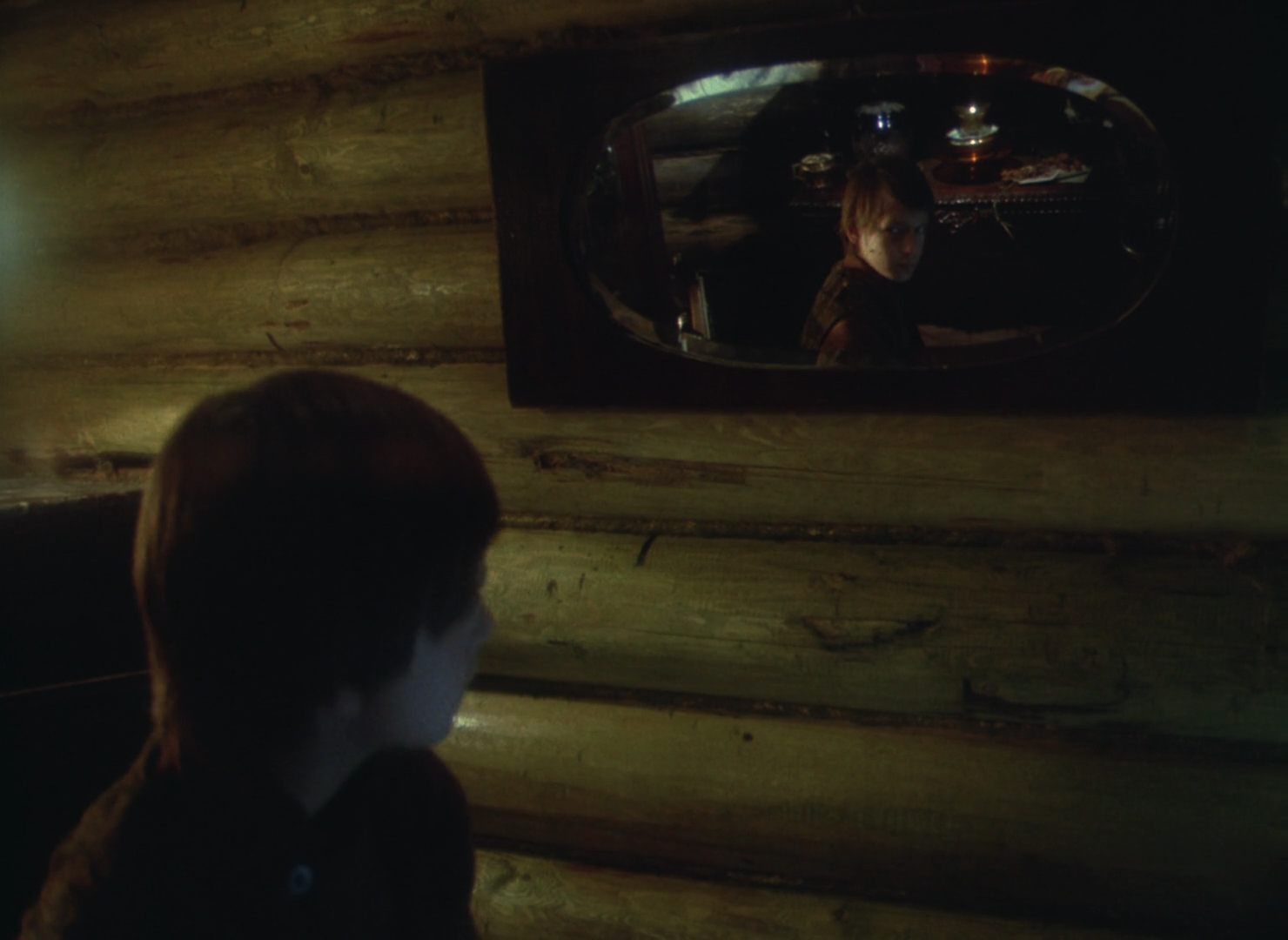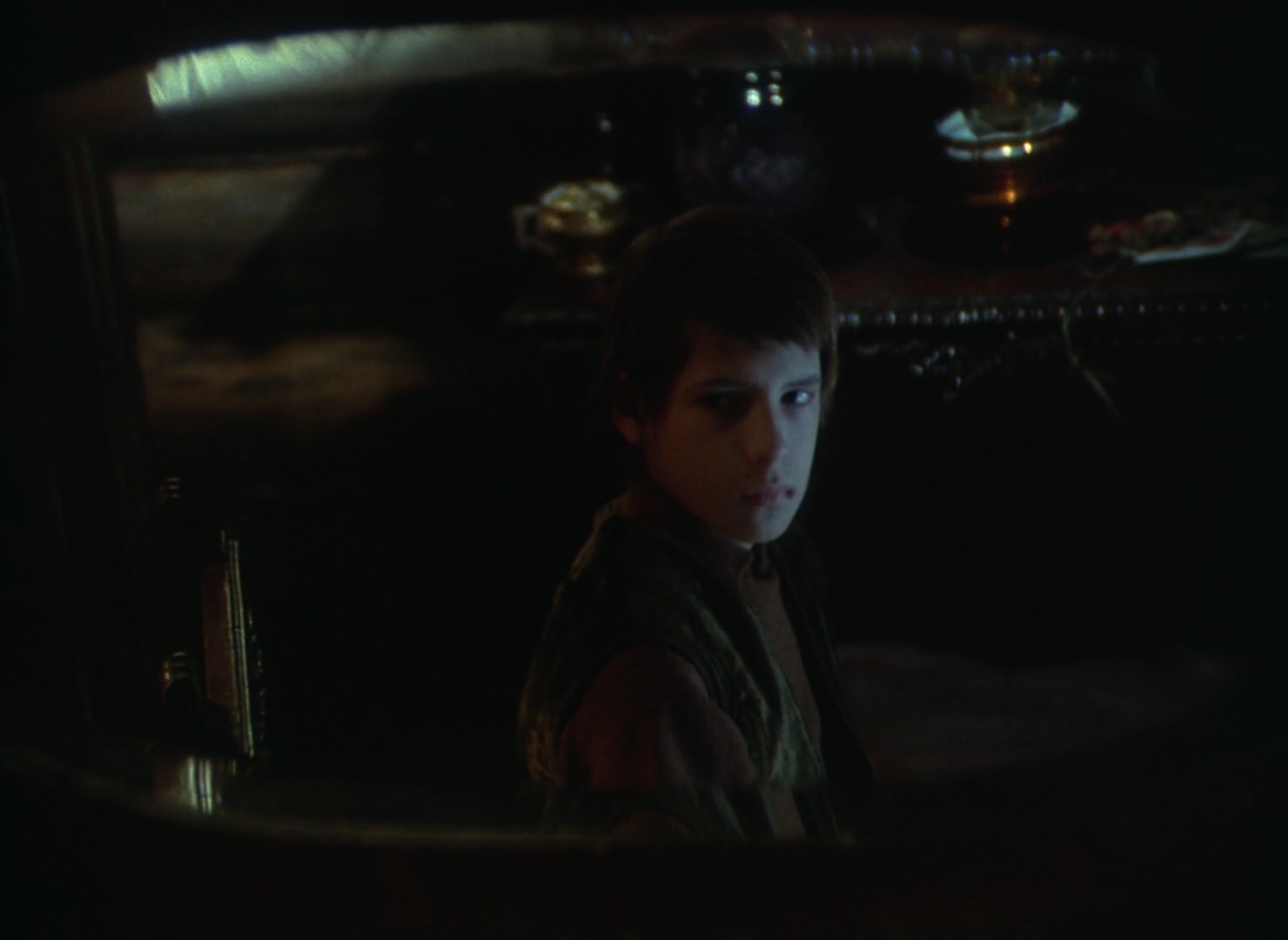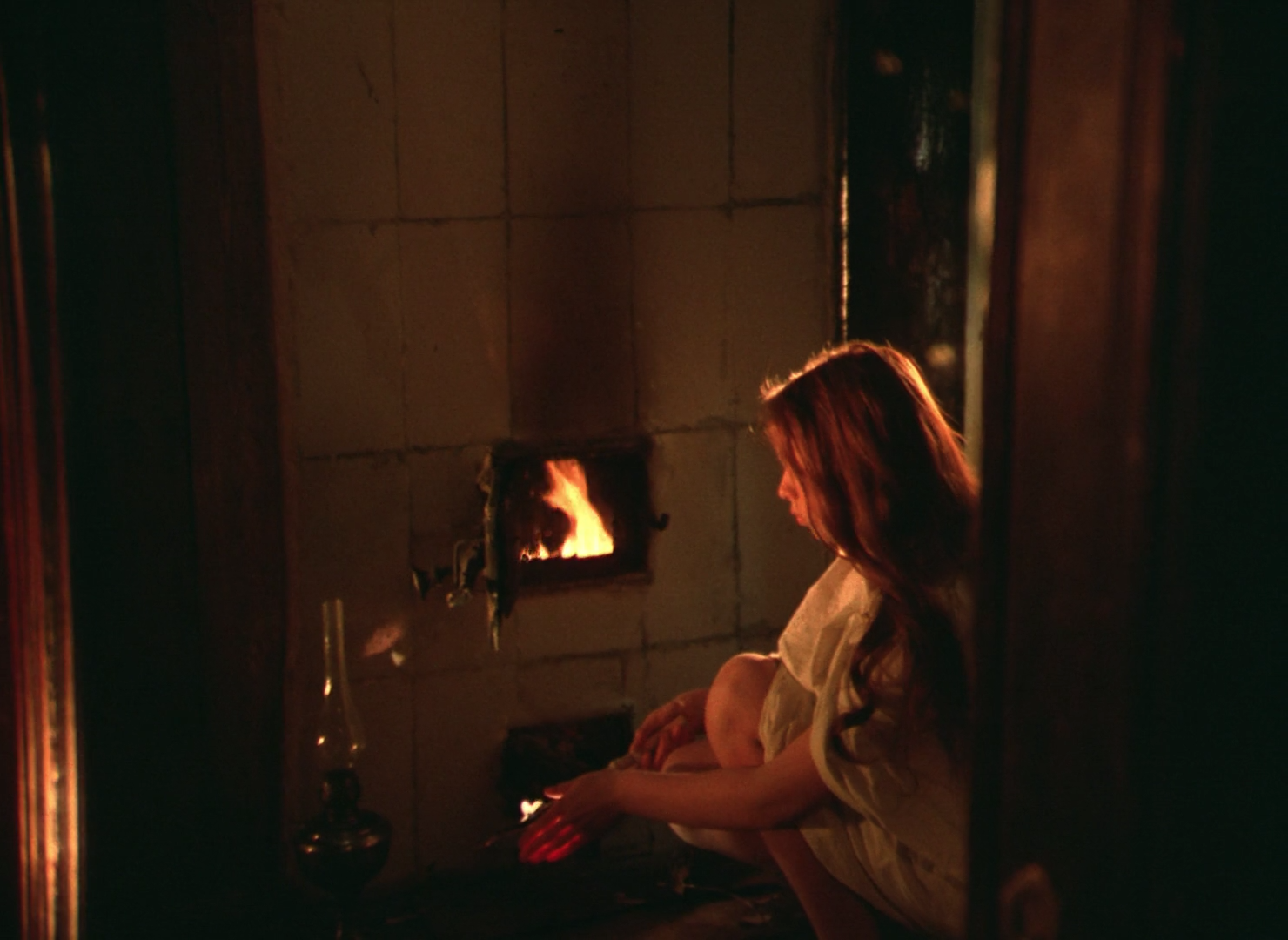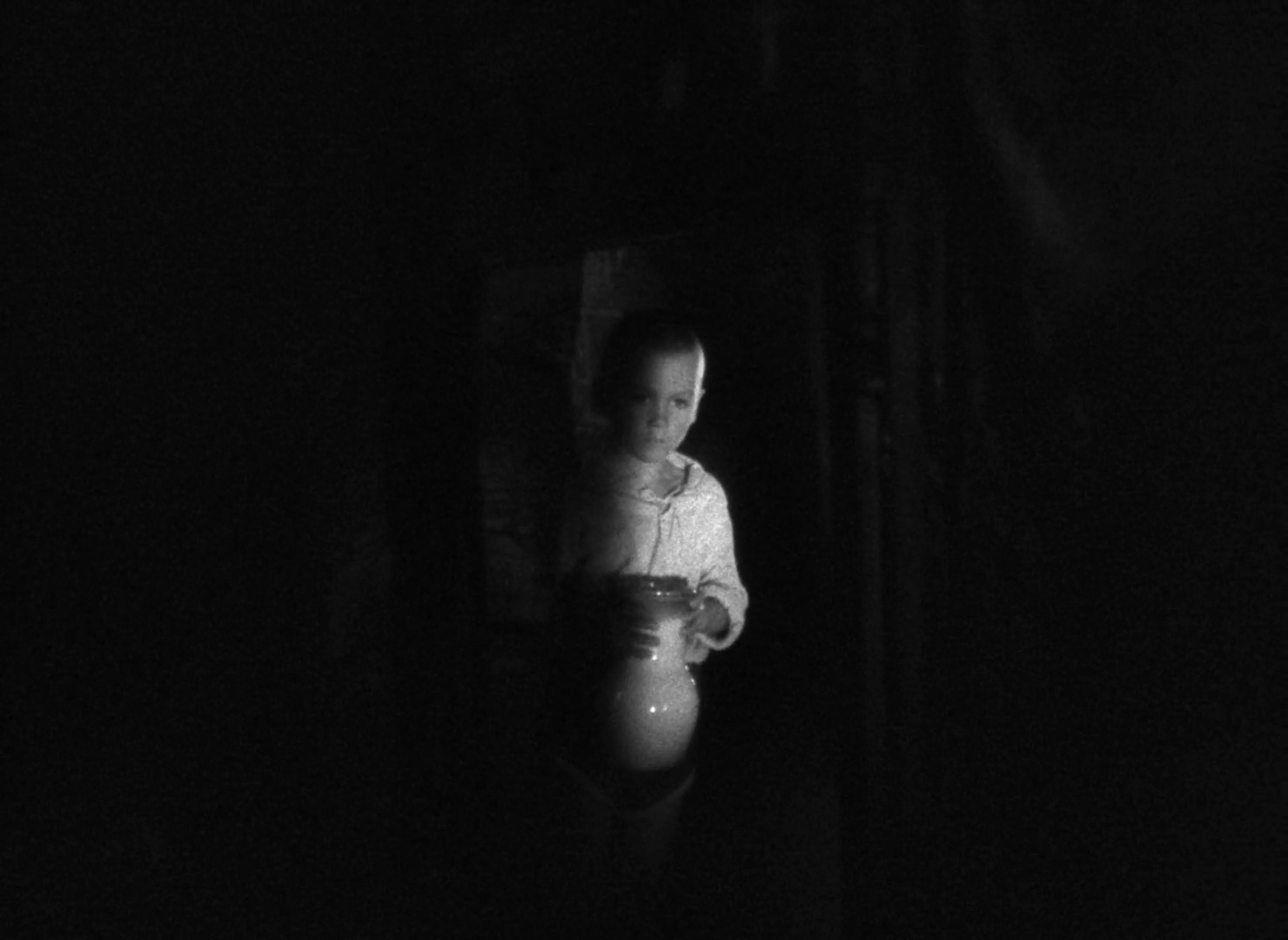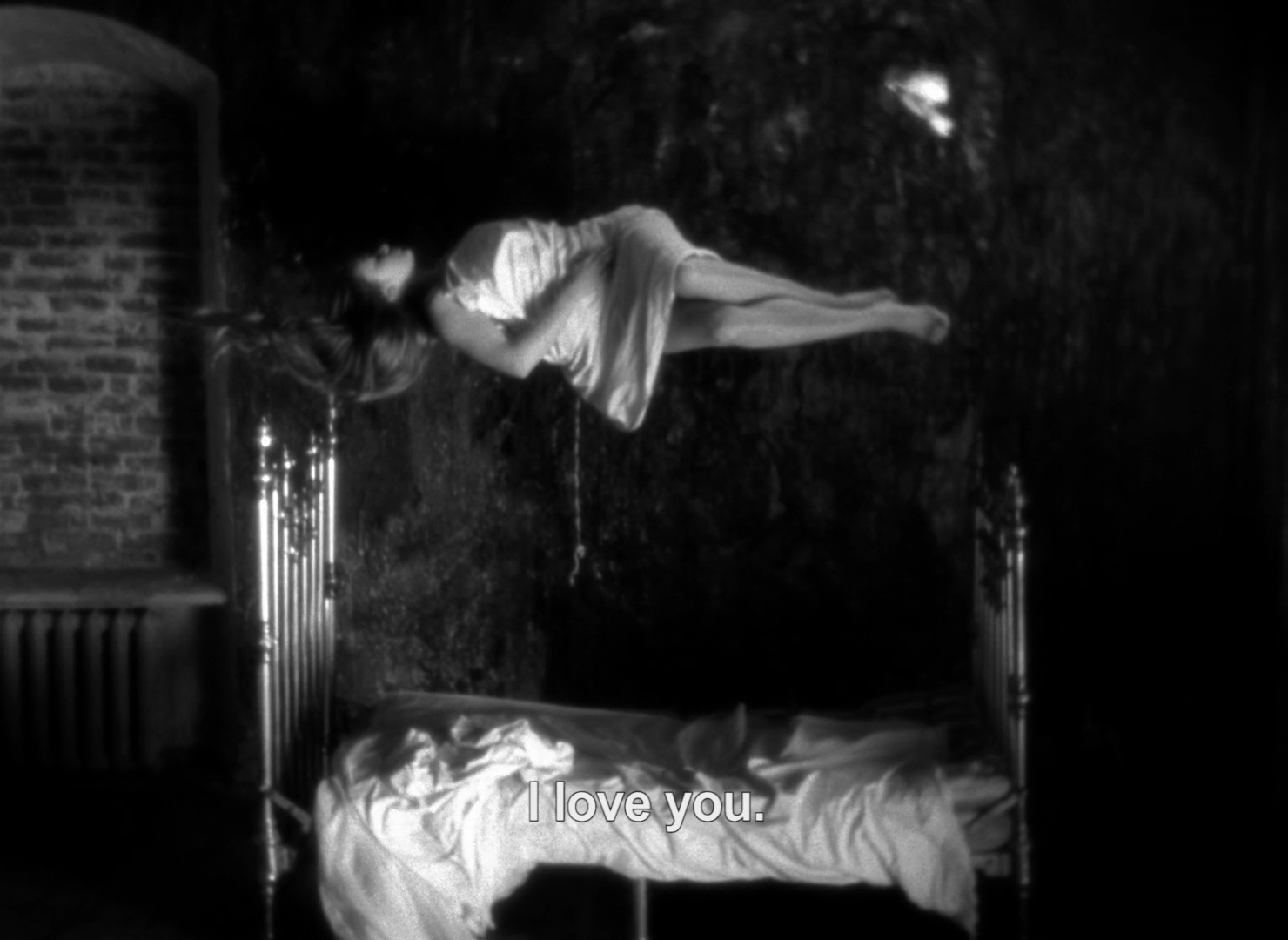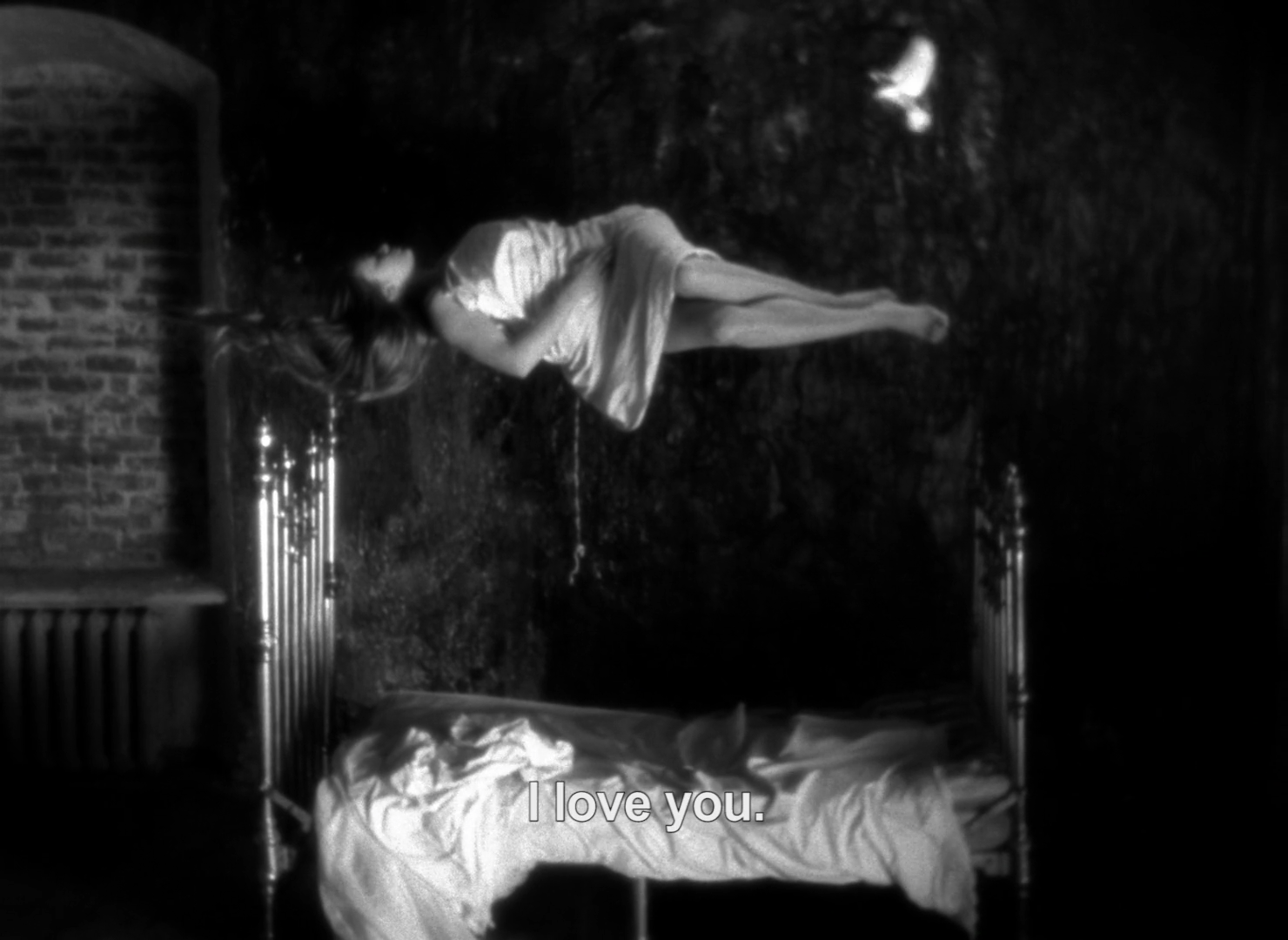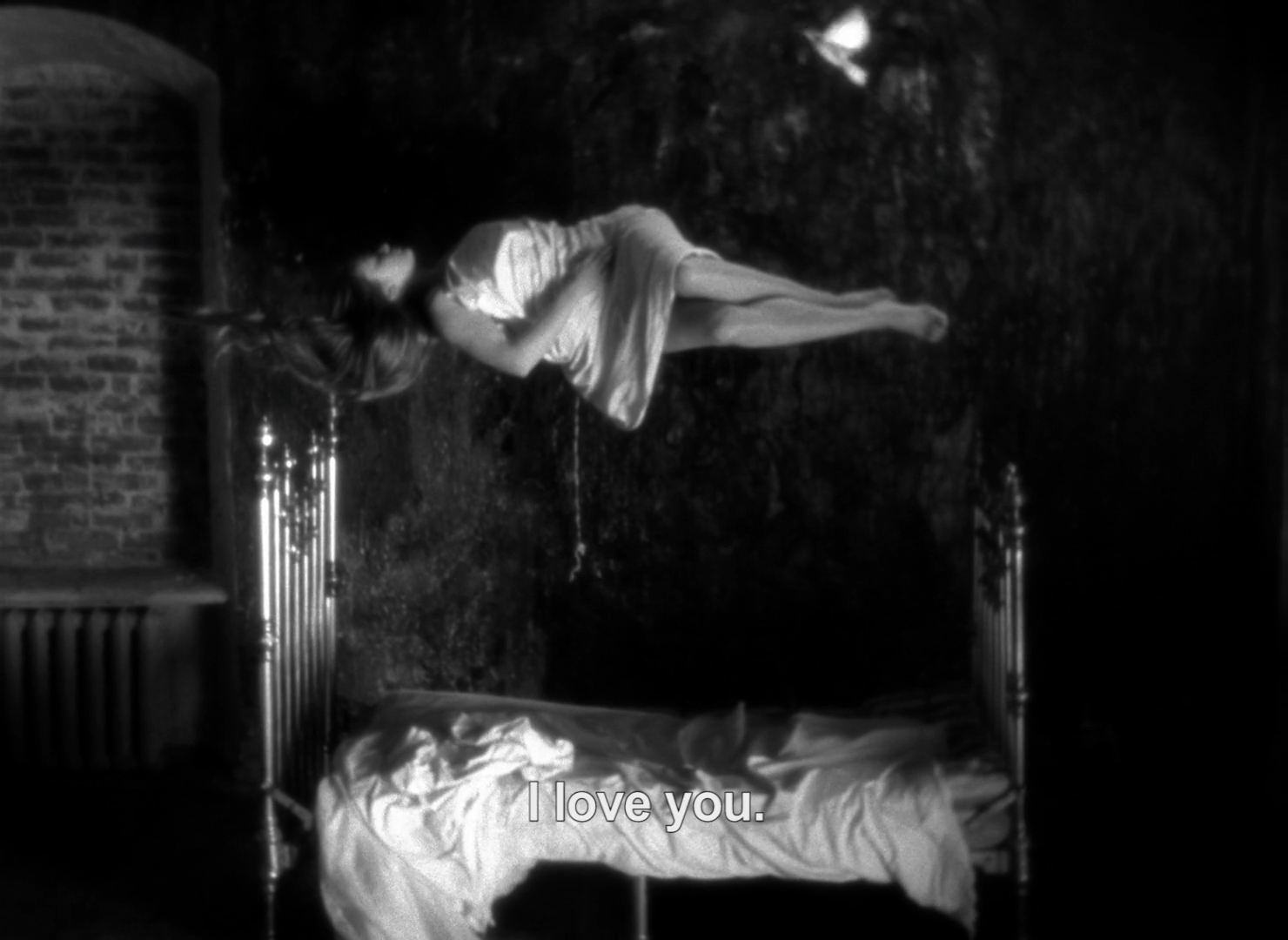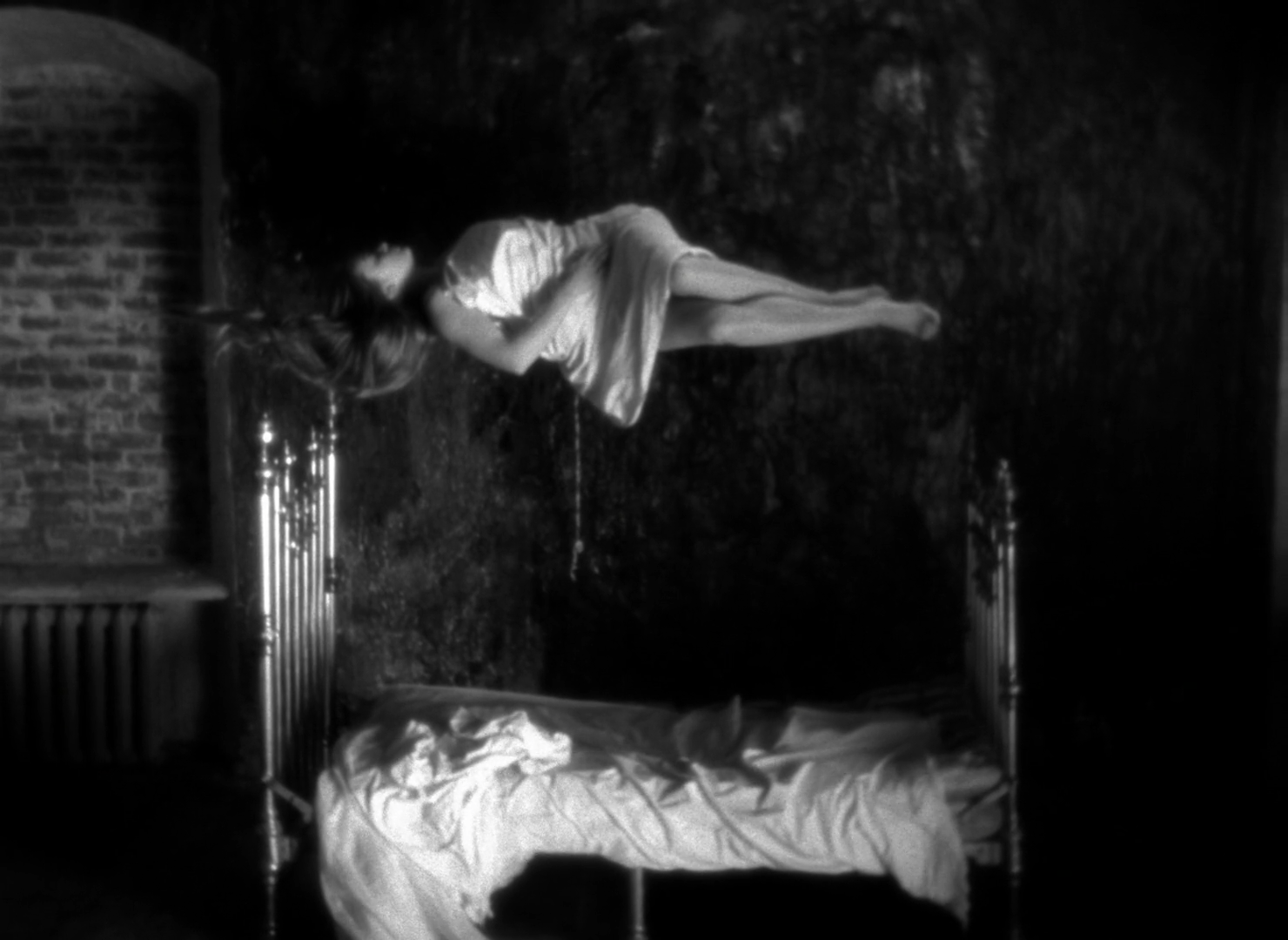Andrei Tarkovsky in A Poet in the Cinema: "If our life tends to this spiritual enrichment, then art is a means to get there."
Andrei Tarkovsky in Donatella Baglivo's A Poet in the Cinema presents a poetic and timeless definition of art.
Andrei Tarkovsky's Mirror: "Everything will be alright."
Mirror, directed by Andrei Tarkovsky, screenplay by Andrei Tarkovsky and Aleksandr Misharin, cinematography by Georgi Rerberg, music by Eduard Artemev, and edit by Lyudmila Feyginova.
“Before defining art—or any concept—we must answer a far broader question: what’s the meaning of man’s life on Earth? Maybe we are here to enhance ourselves spiritually. If our life tends to this spiritual enrichment, then art is a means to get there. This, of course, in accordance with my definition of life. Art should help man in this process.” Art should help mankind in this process that Tarkovsky describes as spiritual enrichment. One of the gifts of art is its ability to present meaning to our experience of life. That is to say, art should help mankind rise toward the actualization of our best selves. As Tarkovsky writes in Sculpting in Time, “Art is a meta-language, with the help of which people try to communicate with one another; to impart information about themselves and assimilate the experience of others. Again, this has not to do with practical advantage but with realizing the idea of love, the meaning of which is in sacrifice: the very antithesis of pragmatism.”
Andrei Tarkovsky in A Poet in the Cinema: "Learn to love solitude."
Andrei Tarkovsky in Donatella Baglivo's A Poet in the Cinema shares a valuable lesson and a gem of wisdom for enriching your life.
Creative Inspiration: All Artists Have Unique Paths
All artists have unique paths. Bresson, Tarkovsky, and Melville are three examples of artists who inspire us not only with their masterful filmmaking and timeless films but also with how they began their careers as filmmakers. It does not matter at what age you start. It does not matter from where you start. The pursuit of your dreams and passions is a never-ending quest. The right time to start is always now.
Favorite Films of Filmmakers: Andrei Tarkovsky's Top 10 Films
Filmmaking Wisdom from Andrei Tarkovsky
Andrei Tarkovsky's Solaris: "But love is a feeling we can experience but never explain."
Solaris, directed by Andrei Tarkovsky, screenplay by Andrei Tarkovsky and Fridrikh Gorenshteyn, cinematography by Vadim Yusov, music by Eduard Artemev, and edit by Lyudmila Feyginova and Nina Marcus.
The key to great filmmaking is how you utilize your cinematic style to absorb the audience into a unique experience that can only be created through the art of cinema. Harmonizing specificity of vision and economy of meaning results in great filmmaking, that is to say your artistic voice plus finely-tuned decision-making in details through a mastery of film language equals a mindful use of your cinematic style. All great films encapsulate the filmmaker’s struggle to express him or herself within the confines of production and his or her feelings of what is and what is not meaningful to the film and the path to implementing what is in the most mindful way to the storytelling of the film.
In Sculpting in Time, Andrei Tarkovsky shares a striking thought on cinema relevant to this philosophy on great filmmaking: “I love cinema. There is still a lot that I don't know: what I am going to work on, what I shall do later, how everything will turn out, whether my work will actually correspond to the principles to which I now adhere, to the system of working hypotheses I put forward. There are too many temptations on every side: stereotypes, preconceptions, commonplaces, artistic ideas other than one's own. And really it's so easy to shoot a scene beautifully, for effect, for acclaim...But you only have to take one step in that direction and you are lost. Cinema should be a means of exploring the most complex problems of our time, as vital as those which for centuries have been the subject of literature, music and painting. It is only a question of searching, each time searching out afresh the path, the channel, to be followed by cinema. I am convinced that for any one of us our filmmaking will turn out to be a fruitless and hopeless affair if we fail to grasp precisely and unequivocally the specific character of cinema, and if we fail to find in ourselves our own key to it.”
Film Technique: The Mirror Shot in Andrei Tarkovsky's Mirror
Mirror, directed by Andrei Tarkovsky, screenplay by Andrei Tarkovsky and Aleksandr Misharin, cinematography by Georgi Rerberg, music by Eduard Artemev, and edit by Lyudmila Feyginova.
"Mirrors are the essence of movies." When we reflect on Andrei Tarkovsky's poetic direction of film language, we can not help but think Tarkovsky would agree with Nicolas Roeg's statement on the use of mirrors in filmmaking. The mirror shot carries the essence of the frame within a frame technique and the feel of the mise-en-abyme, as in the metaphysical meaning manifested by the story within a story technique found in literature and that translates into the visual arts to great effect. Call to mind Gabriel Garcia Marquez's One Hundred Years of Solitude in literature. In painting, think of Las Meninas by Diego Velázquez. In cinema, consider Orson Welles' Citizen Kane and The Lady from Shanghai. The mirror is an impactful tool for artistic expression. In the hands of a filmmaker who emphasizes the effective use of film language, the mirror furthers visual, emotional, and psychological depth, and in the hands of a filmmaker like Andrei Tarkovsky, it furthers poetic depth, as seen in his masterpiece Mirror. The mirror shot is a shot of intimacy that allows a narrative to connect with an audience in terms of contemplation, discovery, desire, identity, memory, persona and truth, and much more.
Filmmaking Wisdom from Andrei Tarkovsky
Filmmaking Wisdom from Andrei Tarkovsky
Andrei Tarkovsky's Mirror: "I Love You."
Mirror, directed by Andrei Tarkovsky, screenplay by Andrei Tarkovsky and Aleksandr Misharin, cinematography by Georgi Rerberg, music by Eduard Artemev, and edit by Lyudmila Feyginova.
“Why do I so frequently include a levitation scene, a body rising up? Simply because the scene has a great power. This way things can be created that are more cinematic, more photogenic. When I imagine a person suspended in mid-air, it pleases me. I find myself filled with emotion. If some fool asks me why in my last film people float up in the air, I would say: ‘It’s magic.’ If the same question came from someone with a more acute intelligence and poetic sensibility, I would respond that for these characters love was not the same thing as it was for the author of Betty Blue. For me, love is the supreme manifestation of mutual understanding, and this can not be represented by the sexual act. Everybody says that if there is no ‘love’ in a film, it is because of censorship. In reality it is not ‘love’ that’s shown on screen but the sexual act. The sexual act is for everyone, for every couple, something unique. When it is put into films, it’s the opposite.” Love for Tarkovsky brings meaning to our human existence. The act of love in his films go beyond the sexual act, and hence, he restrains from depicting the physicality of the sex scene and utilizes levitation scenes as poetic expressions of love. True lovemaking is levitating. True love defies gravity.
Andrei Tarkovsky: Sacrifice Yourself to the Art
“Self-Portrait Polaroid” by Andrei Tarkovsky.
"Cinema uses your life." For Andrei Tarkovsky, cinema is life. His thought that the art form makes use of your life is reflected in his films. Nostalghia follows the story of a Russian poet in Italy as his research into the life of an 18th century composer blends with nostalgic meditations on his life and homeland. Mirror is a cinematic stream of consciousness reflection that draws heavily on the director's personal life. The artistry that shines on screen is also reflective of cinema being life for Tarkovsky. Collaborators speak of his determined focus on set and his drive and commitment toward his filmmaking. This leads to the insight he offers to filmmakers, insight that is useful to all artists. "You should sacrifice yourself to the art." Immersing yourself in the process—in both the artistic act and career journey—is the key to creating a fulfilling creative life.
Essential Film Literature: Notes on the Cinematograph by Robert Bresson
(Note: Some links may be affiliate links. We may get paid if you buy something or take an action after clicking one of these.)
[Robert Bresson’s words] shine like stars, showing us the simple, troublesome way to perfection. - J. M. G. Le Clézio
Robert Bresson’s book on filmmaking Notes on the Cinematograph, known in other publications as Notes on Cinematography as well as Notes on the Cinematographer, is both a must-read and must-have for filmmakers and film lovers alike. As Donato Totaro writes in his article “Notes” on Notes on the Cinematographer:
“What is striking and unique about Bresson is how his writing is so much like his filmmaking: the elliptical style, the epigrammatic prose, the obtuse meanings, the material rigidity, the conciseness, the frugality of means. It is all there in both his work and his words. Andrei Tarkovsky, whose own work of film philosophy Sculpting in Time is among one of the finest written by a filmmaker, admitted that not all of the aesthetic and theoretical ideals he writes about were consummated in his film work. The only filmmaker whom he felt did match up with his theoretical ideal was Bresson. This is another indication of the uncanny similarity between Bresson’s writing and film style.”
A Man Escaped, directed by Robert Bresson.
In his films, Bresson emphasizes the functional and the economy of meaning. Precision and necessity are key elements to his cinematic style. As Susan Sontag says, “The power of Bresson’s films lies in the fact that his purity and fastidiousness are at the same time an idea about life, about what Cocteau called ‘inner style,’ about the most serious way of being human.” For him, art is about having everything in its right place. Therefore, Bresson prioritizes with deep intention and ambition the only elements that distinguish cinema from all other art forms: moving images and sound; he then focuses on using these elements in a utilitarian way.
A Man Escaped is a jailbreak thriller trimmed to its essentials in such a manner that Roger Ebert claims, “Watching a film like A Man Escaped is like a lesson in the cinema…I can’t think of a single unnecessary shot in A Man Escaped.” Au Hasard Balthazar is centered on a donkey and his Christ-like journey, of which Jean-Luc Godard describes as “the world in an hour and a half.” Although the films differ in story and theme, Bresson’s cinematic style is fully present in each: precision and necessity guided by the functional and the economy of meaning. This style is also felt throughout Notes on the Cinematograph, in what he highlights about the art of cinema and in how he presents his ideas (the original French version of the book is titled Notes sur le cinématographe). The following are excerpts:
Master precision. Be a precision instrument myself.
*
Two types of film: those that employ the resources of the theater (actors, direction, etc.) and use the camera in order to reproduce; those that employ the resources of cinematography and use the camera to create.
*
CINEMATOGRAPHY* IS A WRITING WITH IMAGES IN MOVEMENT AND WITH SOUNDS.
*
Cinematographic film where expression is obtained by relations of images and of sounds, and not by mimicry, of gestures and intonations of voice (whether of actors or of non-actors). One that does not analyze nor explain. One that recomposes.
*
Cinematographic film, where the images, like the words in a dictionary, have no power and value except through their position and relation.
*As will become clear, “cinematography” for Bresson has the special meaning of creative filmmaking which thoroughly exploits the nature of film as such. It should not be confused with the work of a cameraman.
Au Hasard Balthazar, directed by Robert Bresson.
Robert Bresson is a monumental figure in film history. As another great filmmaker, Andrei Tarkovsky, says, “Bresson has always astonished me and attracted me with his ascetics. It seems to me that he is the only director in the world that has achieved absolute simplicity in cinema. As it was achieved in music by Bach, in art by Leonardo. Tolstoy achieved it as a writer…Therefore, for me, he’s always been an example of ingenious simplicity.” That quality is also present in this pocket-sized bible on filmmaking and priceless look into the mind of an artist whose insights are captivating in their simplicity and depth. Pearls of filmmaking wisdom abound the book, which also contains lessons that apply to all art forms. Cinema is an experiential art, and Notes on the Cinematograph is an experiential read for those fascinated in Bresson’s set of principles and approach to film language, intrigued by the potential of filmmaking as an art form, and absorbed in their own cinematic style.
Be inspired by the additional excerpts present below, and immerse yourself in the world of Robert Bresson through the following link: Notes on the Cinematograph.
Metteur en scène or director. The point is not to direct someone, but to direct oneself.
*
An image must be transformed by contact with other images, as is a color by contact with other colors. A blue is not the same blue beside a green, a yellow, a red. No art without transformation.
*
Flatten my images (as if ironing them), without attenuating them.
*
Who said: “A single look lets loose a passion, a murder, a war”?
*
Two persons, looking each other in the eye, see not their eyes but their looks. (The reason why we get the color of a person's eyes wrong?)
*
Of two deaths and three births.
My film is born first in my head, dies on paper; is resuscitated by the living persons and real objects I use, which are killed on film but, placed in a certain order and projected on a screen, come to life again like flowers in water.
*
Shooting. To put oneself in a state of intense ignorance and curiosity, and yet to see things beforehand.
*
CINEMA draws on a common fund. The cinematographer is making a voyage of discovery on an unknown planet.
*
Let it be the intimate union of the images that charges them with emotion.
*
A too expected image (cliché) will never seem right, even if it is.
*
A sigh, a silence, a word, a sentence, a din, a hand, the whole of your model, his face, in repose, in movement, in profile, full face, an immense view, a restricted space…Each thing exactly in its place: your only resources.
*
Don't run after poetry. It penetrates unaided through the joins (ellipses).
*
Let it be the feelings that bring about the events. Not the other way.
*
Cinematography: new way of writing, therefore of feeling.
*
Someone who can work with the minimum can work with the most. One who can with the most cannot, inevitably, with the minimum.
*
Hide the ideas, but so that people find them. The most important will be the most hidden.
*
Not to shoot a film in order to illustrate a thesis, or to display men and women confined to their external aspect, but to discover the matter they are made of. To attain that “heart of the heart” which does not let itself be caught either by poetry, or by philosophy, or by drama.
*
Images and sounds like people who make acquaintance on a journey and afterwards can not separate.
*
A single word, a single movement that is not right or is merely in the wrong place gets in the way of all the rest.
*
Don't think of your film apart from the resources you have made for yourself.
*
When a sound can replace an image, cut the image or neutralize it. The ear goes more toward the within, the eye toward the outside.
*
If a sound is the obligatory complement of an image, give preponderance either to the sound, or to the image. If equal, they damage or kill each other, as we say of colors.
*
Your film will have the beauty, or the sadness, or what have you, that one finds in a town, in a countryside, in a house, and not the beauty, sadness, etc. that one finds in the photograph of a town, of a countryside, or a house.
*
To TRANSLATE the invisible wind by the water it sculpts in passing.
*
The eye (in general) superficial, the ear profound and inventive. The whistle of a locomotive imprints in us a vision of the whole station.
*
Make visible what, without you, might never have been seen.
*
It is in its pure form that an art hits hard.
*
Not beautiful photography, not beautiful images, but necessary images, and photography.
*
Your film is not made for a stroll with the eyes, but for going right into, for being totally absorbed in.
*
Empty the pond to get the fish.
*
Cinematography films: emotional, not representational.
*
It is with something clean and precise that you will force the attention of inattentive eyes and ears.
*
Your public is not the public for books, stage shows, exhibitions, or concerts. Taste in literature, in theater, in painting, or in music is not what you have to satisfy.
*
From the clash and sequence of images and sounds, a harmony of relationships must be born.
*
The most ordinary word, when put into place, suddenly acquires brilliance. That is the brilliance with which your images must shine.
*
What I reject as too simple is the things that is important and that one must dig into. Stupid mistrust of the simple things.
*
The beauty of your film will not be in the images (postcardism) but in the ineffable that they will emit.
*
ECONOMY. Racine (to his son Louis): I know your handwriting well enough, without your having to sign your name.
*
The future of cinematography is to a new race of young solitaries who will shoot films by putting their last cent into it and without letting themselves be owned by the material routines of the trade.
*
Is it for singing always the same song that the nightingale is so admired?
*
Proust says that Dostoevsky is original in composition above all. It is an extraordinarily complex and close-meshed whole, purely inward, with currents and counter-currents like those of the sea, a thing that is found also in Proust (in other ways so different) and whose equivalent would go well with a film.
*
A great non-virtuoso pianist, of the Lipatti kind, strikes notes that are rigorously equal: minims, each the same length, same intensity; quavers, semiquavers, etc., likewise. He does not slap emotion onto the keys. He waits for it. It comes, and fills his fingers, the piano, him, the audience.
*
Bach at the organ, admired by a pupil, answered: “It's a matter of striking the notes at exactly the right moment.”
*
The pistol-shot of the painter’s eye dislocates the real. Then the painter puts it up again and organizes it in that same eye, according to his taste, his methods, his Ideal Beauty.
*
Equality of all things. Cézanne painting with the same eye and the same soul a fruit dish, his son, the Montagne Sainte-Victoire.
*
Cézanne: “At each touch I risk my life.”
(Note: As an Amazon Associate we earn from qualifying purchases.)
